See list of our speakers and field trip leaders below. These scientists are some of the Who’s Who for Geology in the Pacific NW. Please click on any speaker photo to learn more about them and their publications, including their websites and blogs.
Also use the top menu choices under the Speakers tab to access lists of just the speakers’ blogs and resources.
2020-01-18 Jeff Tepper — Accretion of the Olympics and Birth of the Cascades
From the Accretion of the Olympics to the Birth of the Cascades: The Eocene Transformation of Washington Geology About the lecture Dr. Jeffrey Tepper showed how Port Townsend lies between two mountain belts with very different origins, the oceanic Olympic Mountains to the west and the continental Cascade Range to the east. But despite their contrasting traits, the histories of these two chains are intimately connected. He explored how the arrival of the Siletzia terrane about 52 million years ago led to a profound geological transformation of the Pacific Northwest. Over a 10 million year interval in the mid-Eocene (~54-44 Ma),… Read more2020-01-18 Jeff Tepper — Accretion of the Olympics and Birth of the Cascades
2022-01-08 Carolyn Driedger, USGS—Hazards from the Nevado del Ruiz and Mount Rainier volcanoes
The Lecture Nevado del Ruiz (Colombia) and Mount Rainier (US) exist a hemisphere apart, but they both project similar hazards for communities downstream. Central to their stories is the development and continued presence of weak and collapse-prone hydrothermally altered rock, and perennial covers of glacier ice and snow. Slopes of both volcanos are mantled by loose rock debris that can be remobilized to initiate lahars. At both volcanoes, five major glaciofluvial rivers flow down narrow valleys to lowland areas that support large human populations. More than a 150,000 persons live in areas at risk of lahars that could emanate from… Read more2022-01-08 Carolyn Driedger, USGS—Hazards from the Nevado del Ruiz and Mount Rainier volcanoes

2022-12-07 KPTZ Nature Now (Interview) — Timefulness: Thinking like a Geologist
Nature Now, a weekly 30-minute broadcast on KPTZ 91.9 MHz in Port Townsend, will interview Dr. Bjornerud as a preview to her Dec. 10th lecture. Nan Evans of KPTZ and JLT and geologist Marcia Bjornerud of Lawerence University (Appleton, Wisconsin) will discuss how geological perspectives can deepen our understanding of our home Earth and the impact on the human species on it. The show will broadcast on KPTZ three times. Show #596: Dec. 7 (Wed.) at 12:30 PM, Dec. 8 (Thur.) at 5:30 PM, Dec. 10 (Sat.) at 12:30 PM. The recorded broadcast will be available later on KPTZ’s podcast webpage.

2023-03-15 KPTZ Interview with David B. Williams, prelude to Seattle’s Geologic Secrets
Nan Evans of KPTZ and Seattle Naturalist David Williams, discussed “A Sense of Place – What is it?” This is a prelude to David’s March 18th lecture entitled “Secrets of Seattle Geology—Connections of the human story and the geology story.” The interview was delivered for Nature Now, a weekly radio broadcast on KPTZ 91.9 MHz. The interview was recorded as a MP3 file and broadcast three times preceding David’s March 18, 2023 lecture for the Quimper Geological Society: Show #610: David Williams—A Sense of Place: What does that mean? Broadcast on March 15 at 12:30 PM; March 16at 5:30 PM;… Read more2023-03-15 KPTZ Interview with David B. Williams, prelude to Seattle’s Geologic Secrets
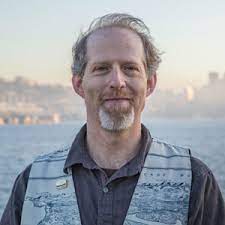
2023-03-18 David B. Williams—Secrets of Seattle’s Geology: Connections of the human story and the geology story
The Lecture. Unlike many regions in the country, the Seattle area is constantly reminded of its geologic past, present, and future. Whether it is our landslides, our glacier-carved topography, or our volatile volcanoes, this area’s geologic history is young, dynamic, and accessible. In this talk, David explained why we can blame California for some of our geo hazards, how coal influenced our economic development, and why it’s harder to travel east/west than north/south throughout the area. Denny Hill, Seattle, 1910 The Lecturer. David B. Williams is an author, naturalist, and tour guide whose award-winning book, Homewaters: A Human and… Read more2023-03-18 David B. Williams—Secrets of Seattle’s Geology: Connections of the human story and the geology story
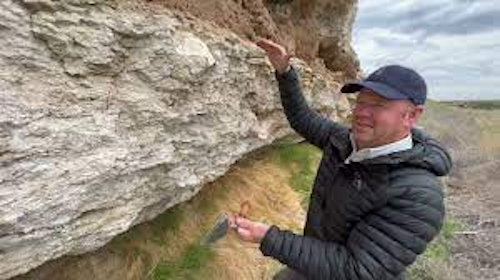
2023-04-29 Skye Cooley: Calcrete and Soil-Climate Evidence
The Lecture: Soil-climate evidence for timing of the Cascade uplift and creation of its rain shadow Calcrete is a CaCO3-rich hardpan paleosol that forms in dry, stable landscapes of the world. Calcrete in eastern Washington cements a 20-m-thick interval across three geomorphic domains: Palouse Hills, Channeled Scablands, and Yakima Fold Belt. The sheet-like calcrete deposit encloses ancient Scabland flood gravels and defines a regional paleosurface that has been bent and broken by Quaternary faults. Calcrete overprints primarily lowland alluvial deposits (ancestral Columbia-Snake River floodplain) and basaltic alluvial fan gravels shed from fault-bounded ridges. Thick layers of pedogenic carbonate accumulated during… Read more2023-04-29 Skye Cooley: Calcrete and Soil-Climate Evidence
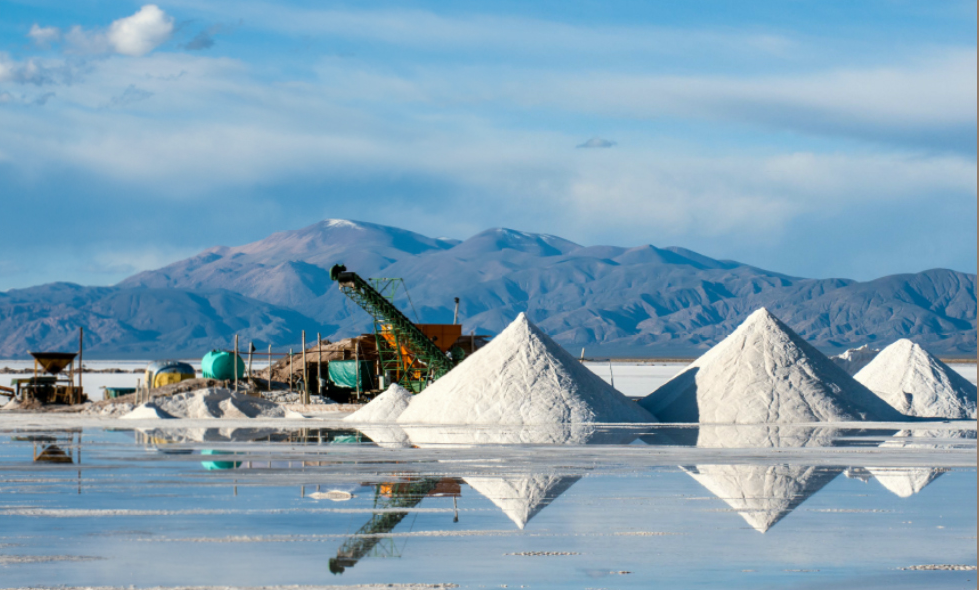
2023-05-13 Vince Matthews — Global Scramble for Natural Resources
Vince Matthews, former director of the Colorado Geological Survey and now a consulting geologist in Wisconsin, spoke on the Global Scramble for Natural Resources. This was a ZOOM broadcast Saturday, May 13, 2023. The Lecture During the 1990s, the world’s most populous nations—China and India–were unleashed from Communist and Socialist regimes, respectively. The first decade of the 21st Century saw China’s GDP grow at more than 10 percent per year and India’s at 7-9 percent. Both are drastically increasing their use of all natural resources. Although they have resources of their own, they are insufficient to meet their internal demand…. Read more2023-05-13 Vince Matthews — Global Scramble for Natural Resources
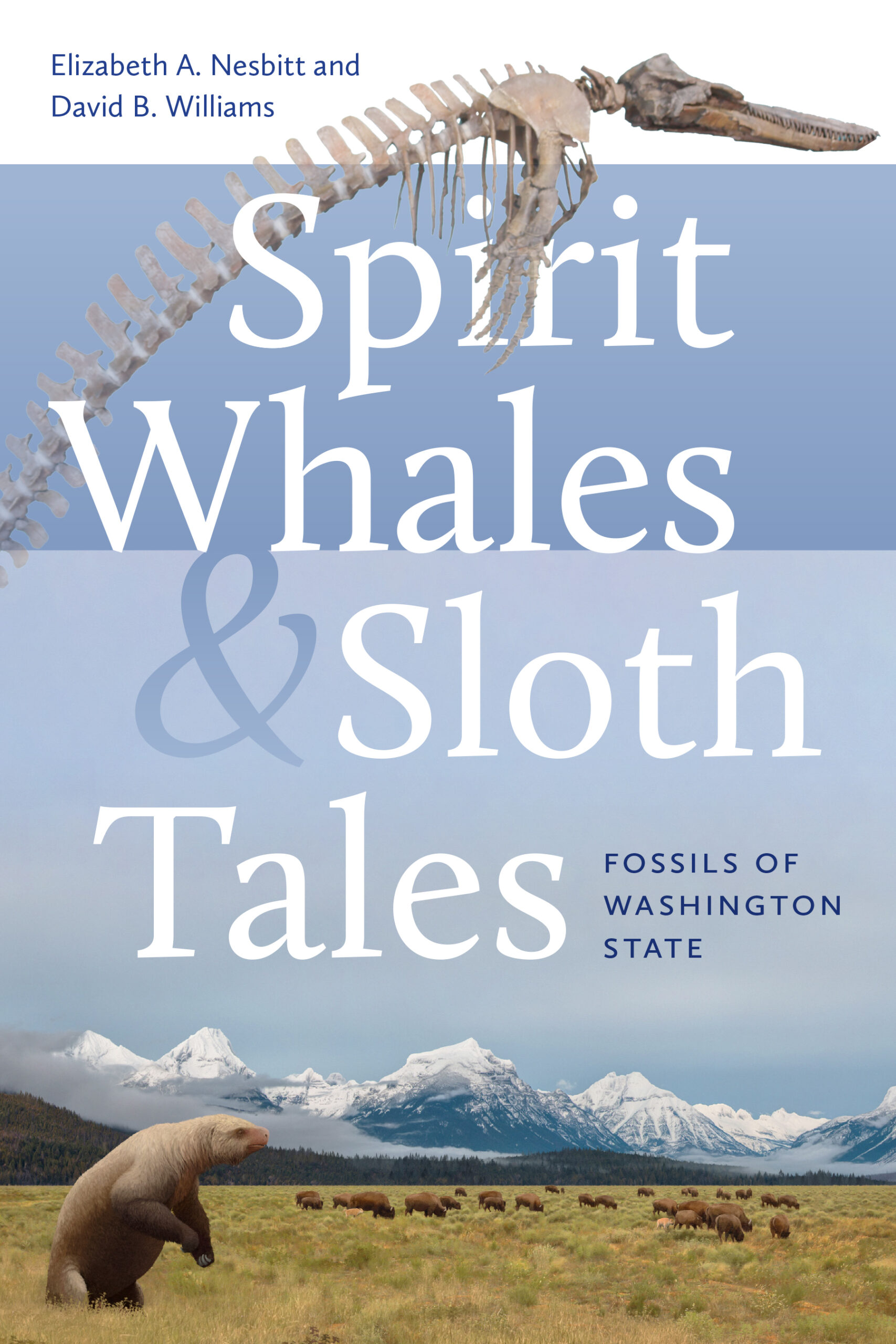
2023-11-11 Washington’s fossils—Nesbitt and Williams
SATURDAY NOVEMBER 11, 2023 Co-authors Elizabeth Nesbitt and David B. Williams discussed their new book, Spirit Whales and Sloth Tales: Fossils of Washington State. They provided background on what inspired them to write their book on fossils in Washington state, why they chose the fossils they did, and some of the new science that has allowed paleontologists to tease out the 500-million-year long story of life in this region. They connected the geology with fossils and illustrated how/why we have certain fossils, such as those brought in on accreted terranes and where our oldest fossils are located. On Sunday, November… Read more2023-11-11 Washington’s fossils—Nesbitt and Williams
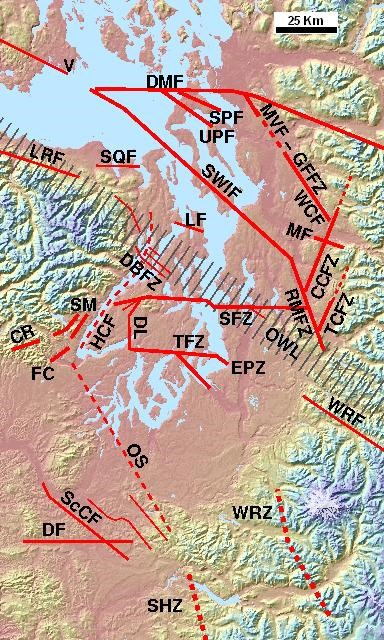
2024-03-23 Brian Sherrod — New Findings on Earthquakes of Salish Lowland with Tree Analysis
We enjoyed hearing in-person USGS geologist, Dr. Brian Sherrod, on February 24, 2024 and by Zoom March 23. THE LECTURE: High-resolution dating of a multi-fault earthquake and earthquake recurrence in the Salish Lowland Dr. Brian Sherrod discusses new evidence for a multi-fault rupture. This rupture occurred along the Seattle (SFZ) and Saddle Mountain (SM) faults in the winter of 923-924 CE. He presents new evidence for a proto-historic earthquake on the Seattle fault (in the 1830s), and he talks about recurrence of large earthquakes in the Salish Lowland. He employs photographs, USGS mapping, lidar measurements, charts, and graphs to elaborate… Read more2024-03-23 Brian Sherrod — New Findings on Earthquakes of Salish Lowland with Tree Analysis
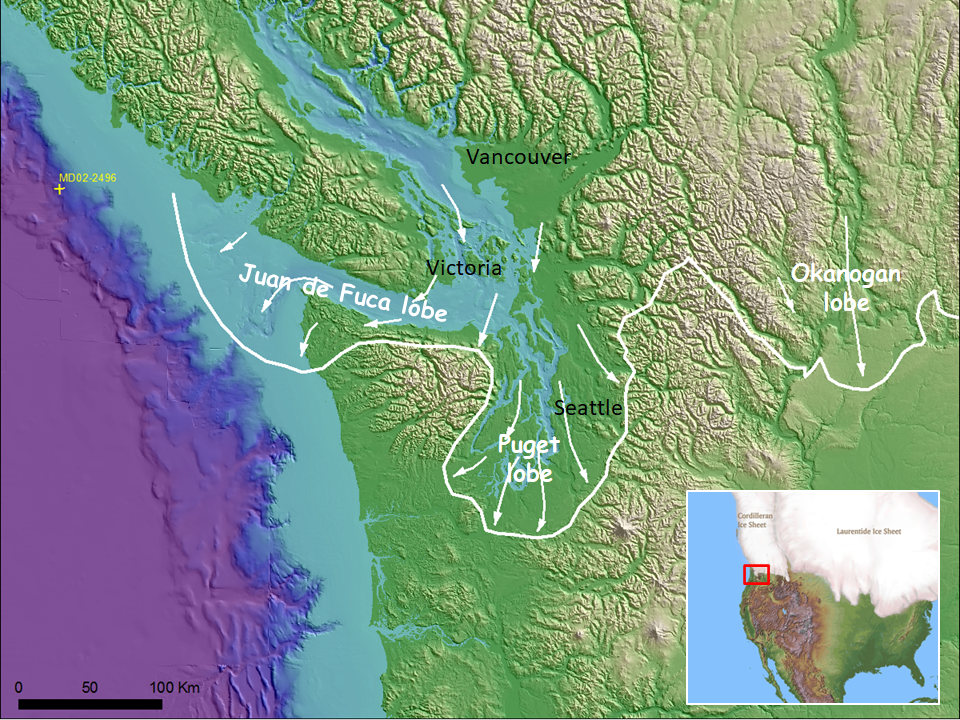
2024-04-20 Ralph Haugerud – Glacial Landscape of Puget Sound
The Lecture: Post-mortem of the southern Cordilleran Ice Sheet Death of an ice sheet can have many causes, as shown by retreat of the southern Cordilleran Ice Sheet about 15,000 years ago. East of the Cascades, the margin of active south-flowing ice retreated north as less snow fell and more melted. West of the Cascades, the Juan de Fuca lobe of the ice sheet appears to have floated away in response to rising sea level, perhaps without a proximal climatic cause. Collapse of the Juan de Fuca lobe diverted ice from the Puget lobe, which consequently stagnated at its margin and… Read more2024-04-20 Ralph Haugerud – Glacial Landscape of Puget Sound
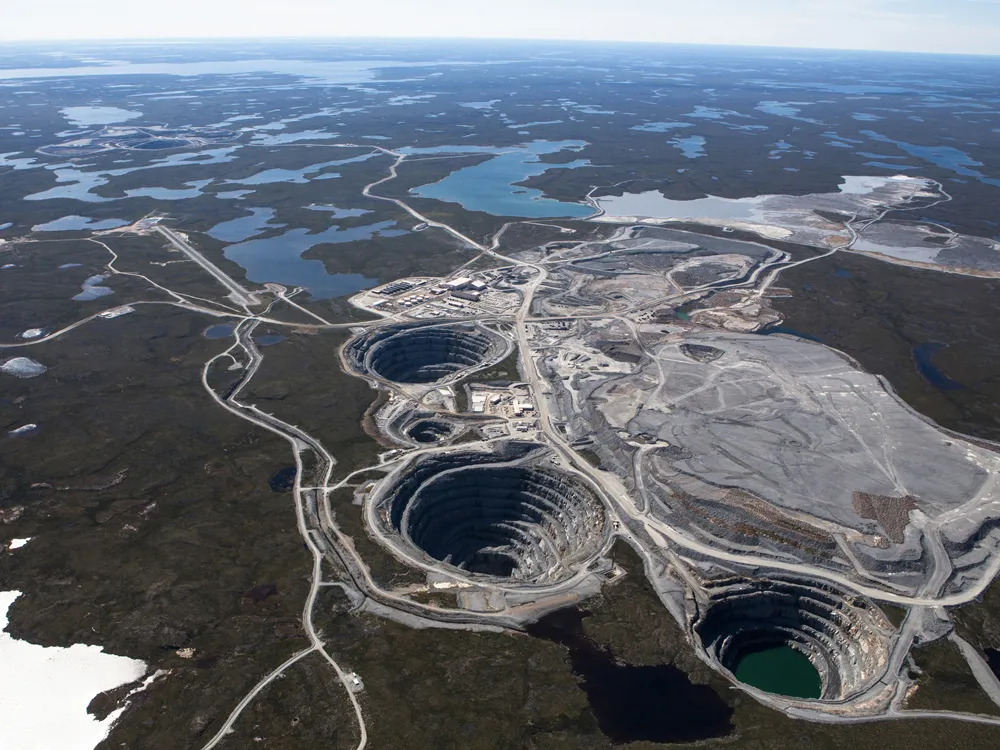
2025-02-15 Jeff Tepper – Diamond: A Multifaceted Gem
LECTURE – Diamond: A Multifaceted Gem QGS hosted former QGS advisor and emeritus professor, Jeff Tepper on February 15, 2025. Jeff’s lecture described that diamonds have been revered as precious stones for over 2000 years, yet they are composed simply of carbon, one of the most common elements on Earth. He explained their rarity arises from the fact that they form at extreme pressures deep in the Earth’s mantle and then are brought rapidly to the surface in CO2-rich explosive eruptions. No such eruptions have occurred in human history, but we know they occur only in the interiors of continents,… Read more2025-02-15 Jeff Tepper – Diamond: A Multifaceted Gem

2025-09-13 Tom Badger – Hazards and Highways: Troubles for the NW Olympic Peninsula
The Lecture Hazards and Highways: Troubles for the NW Olympic Peninsula State Route 112 is the sole access road for the northwestern Olympic Peninsula and the remote communities situated along the Strait of Juan de Fuca, west of Port Angeles. Particularly unfavorable geology underlies the western half of this road and this, combined with steep topography and an exceptionally wet winter climate, make it one of the most landslide-afflicted highway corridors in the state. Landslides and lowland flooding impact travel most winters, causing short duration closures of one or both lanes and necessitating persistent maintenance efforts. On a longer cycle… Read more2025-09-13 Tom Badger – Hazards and Highways: Troubles for the NW Olympic Peninsula
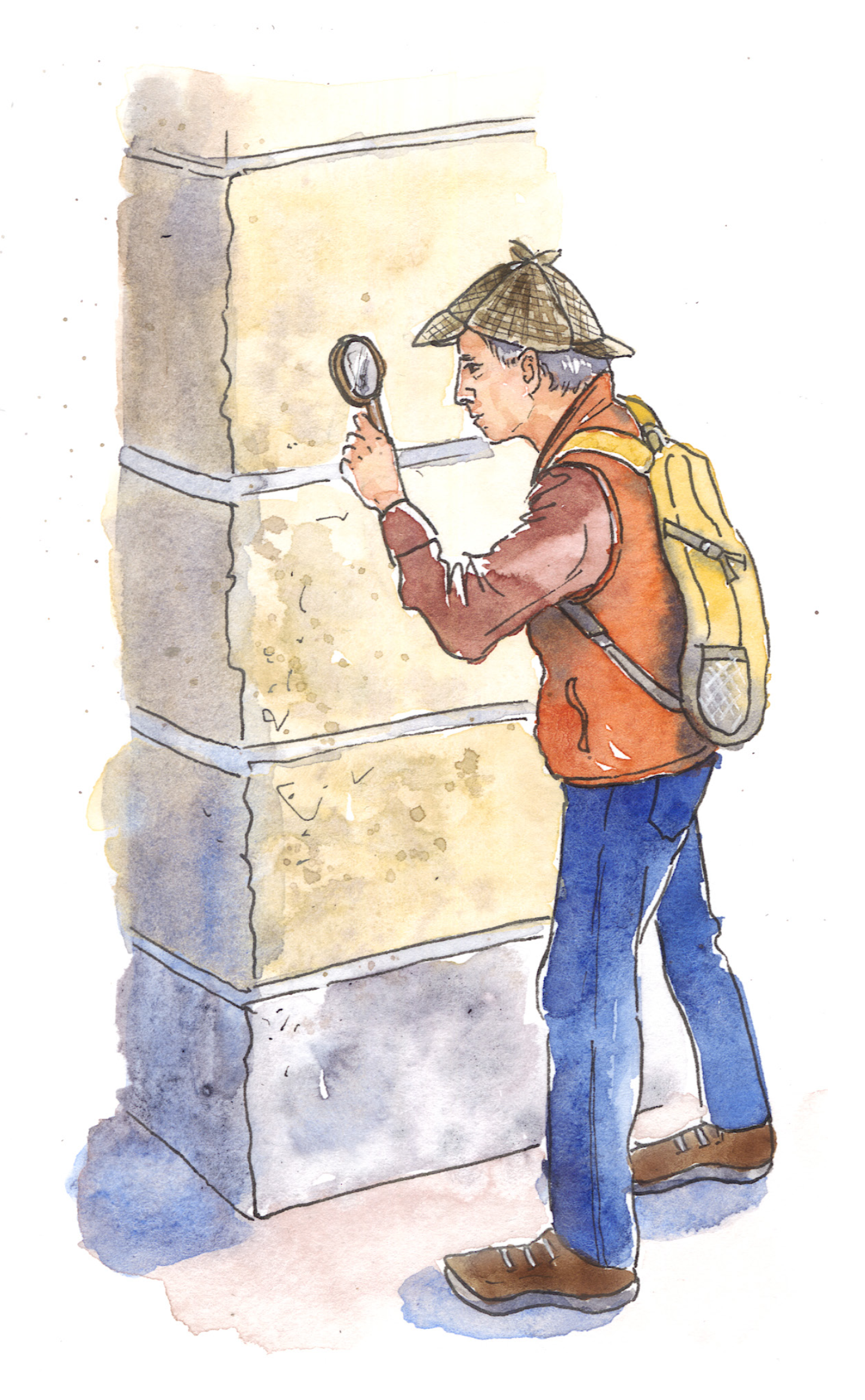
2025-12-06 David B. Williams – Two NEW BOOKS!
The Lecture – Exploring History and Nature in the City (Seattle) Quimper Geological Society welcomes back our friend David B. Williams, author, naturalist, and tour guide. Please join the QGS community on December 6, 2025, at 4pm. The lecture will be at the First Baptist Church, 1202 Lawrence Street, Port Townsend. (Entrance in the back.) Door opens at 3:30. David B. Williams will speak about his two new books: Seattle Walks and Wild in Seattle. In his talk, David will discuss how urban dwellers can get to know their city better by getting outside, walking, observing, and paying attention. He will share some… Read more2025-12-06 David B. Williams – Two NEW BOOKS!
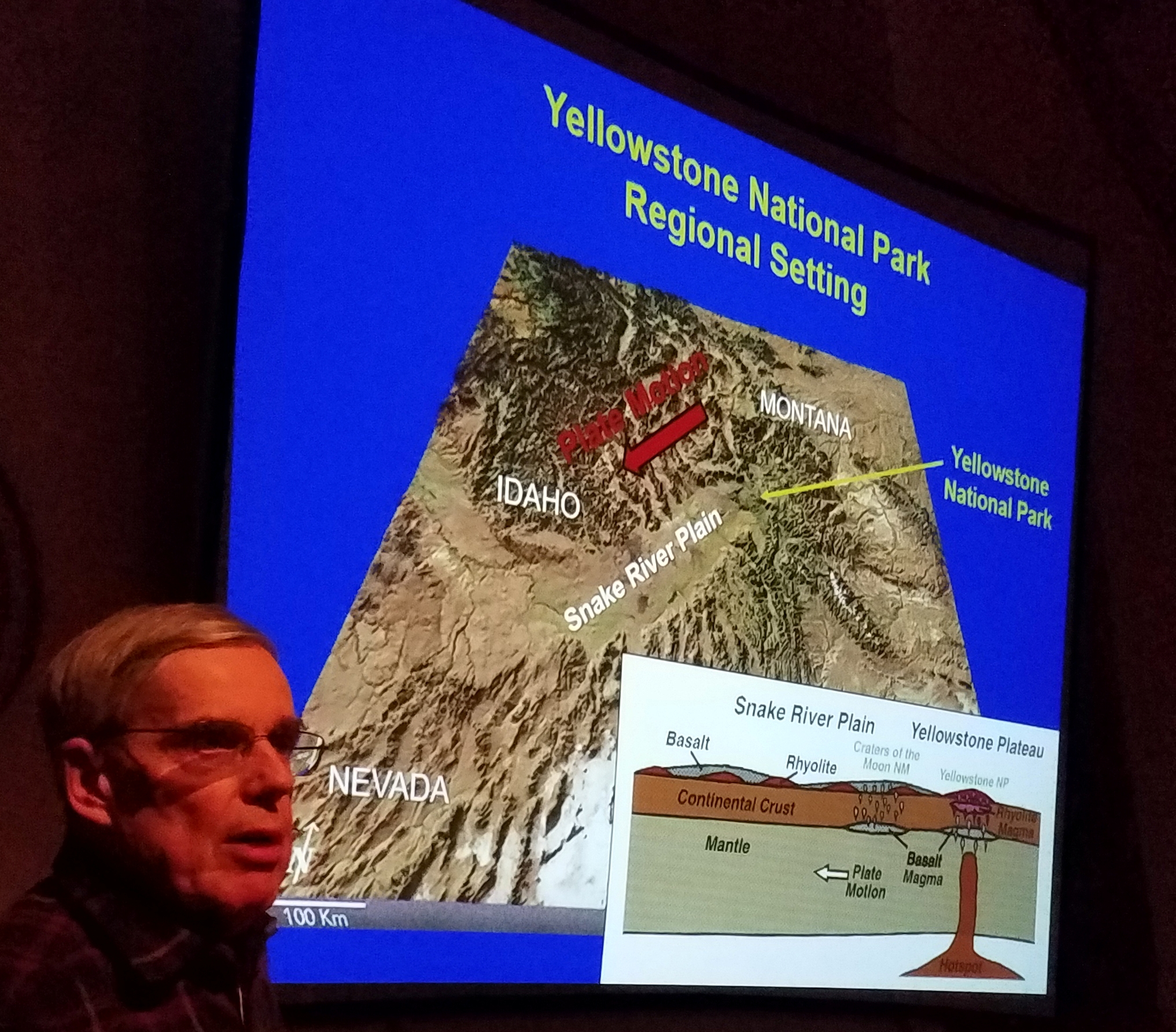
Aldrich, James
Jim Aldrich has a Ph.D. from University of New Mexico (1972), taught geology at several colleges, and was a structural geologist for 20+ years at Los Alamos National Laboratory in New Mexico. Jim served as a staff member and Group Leader of Earth and Environmental Sciences. He has conducted investigations on low-temperature geothermal projects in Arizona and New Mexico; Los Alamos Hot Dry Rock Project; geothermal investigations in Honduras; state of stress in the crust of southwestern US; and Rio Grande rift. Project Manager for Environmental Restoration Project of Los Alamos. Before moving to Santa Fe, NM in 2020, Jim Aldrich… Read moreAldrich, James
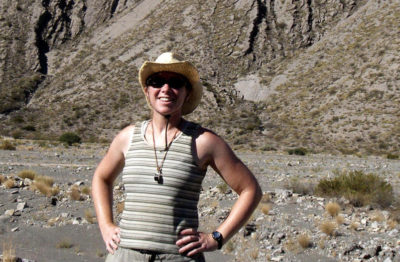
Anderson, Megan
Megan Anderson is an earthquake geophysicist at the Washington Geological Survey. Megan spent her early years in Kent, WA during which the eruption of Mt. St. Helens probably spurred her fascination with geology, which was her major at Carleton College in Minnesota. She studied subduction processes and earthquakes in South America for her Ph.D. at the University of Arizona. She has studied numerous tectonic regions of the world but has always made her way back to the Pacific Northwest because there is so much left to discover. She taught for 10 years at Colorado College, dragging her students and equipment across… Read moreAnderson, Megan
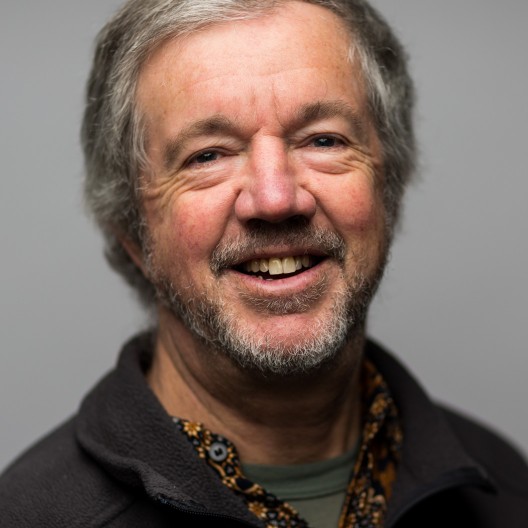
Atwater, Brian
When Americans think of earthquakes, they are likely to think of California. Laced with active faults and subject to frequent quakes, the state certainly stands out on national maps of seismic hazards. But the current maps also highlight seismic hazards farther north, chiefly in Washington and Oregon, which became known since the 1970s through a remarkable series of discoveries in the United States and Japan. USGS geologist Brian Atwater played key roles in these discoveries by identifying, in coastal geology, the traces of earthquakes and tsunamis going back thousands of years. The 1980 eruption of Mount St. Helens called attention… Read moreAtwater, Brian
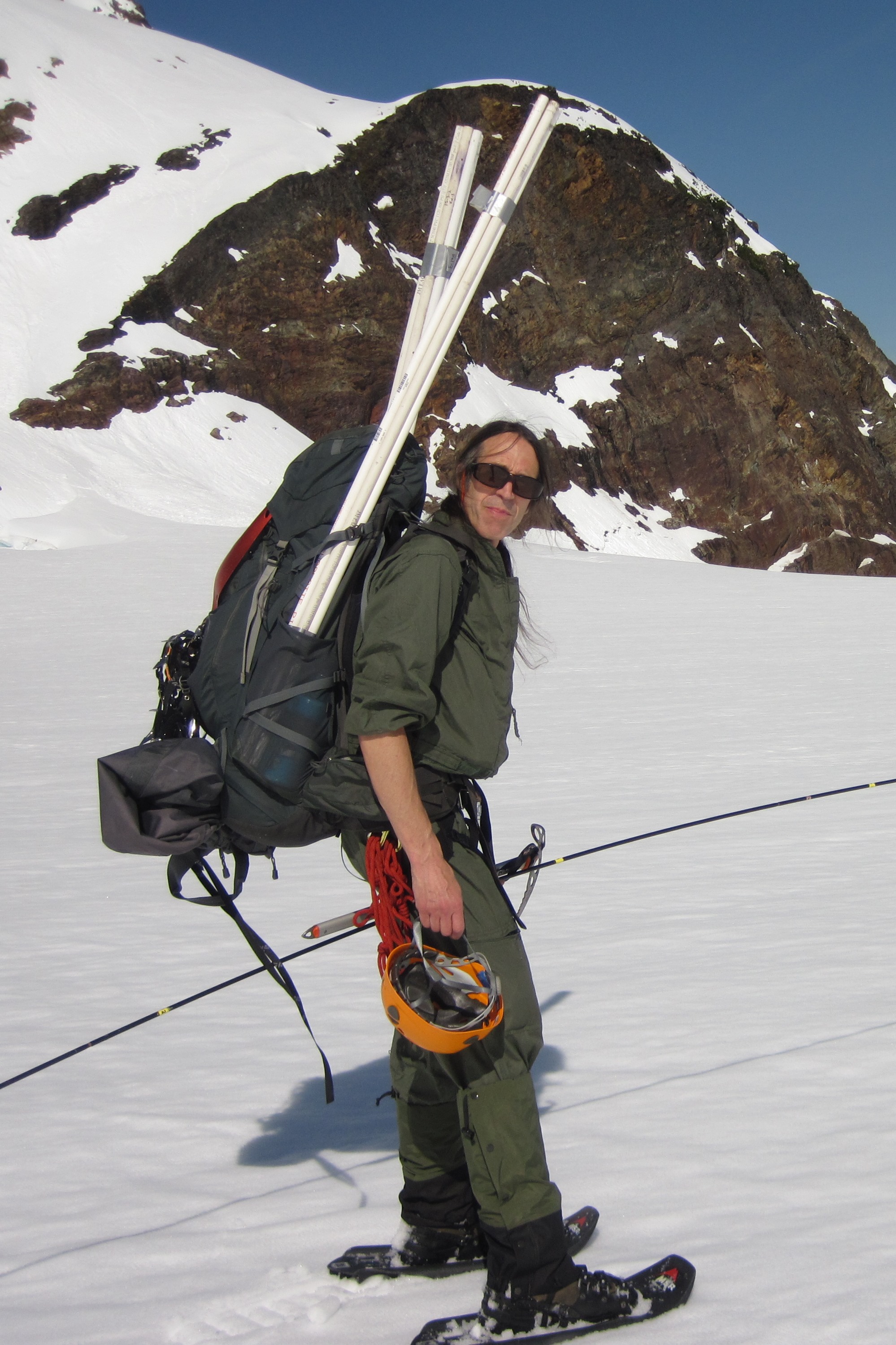
Baccus, Bill
Bill Baccus is a Physical Scientist with the National Park Service where he works on the North Coast and Cascades Network supporting their long-term monitoring program. He operates a network of climate stations within the park, studies winter snow pack, glaciers, and mountain lakes, and studies coastal ecosystems. In Dec, 2015, Bill presented a well illustrated talk on “Glaciers of the Olympic National Park—Past, Present, and Future?” (Updated Oct. 2021)
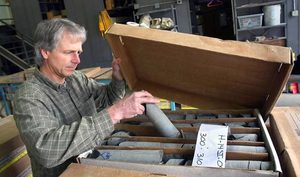
Badger, Tom
Tom has a BS in geology from Western Washington University (1983) and an MS in geological engineering from the University of Nevada, Reno (2002). In 1984, he started work with the Washington State Department of Transportation, monitoring instrumentation for the I-90 Mt. Baker Tunnel project. Tom has been employed with WSDOT since, served as the Chief Engineering Geologist, and retired in 2017. During his 30-year tenure with WSDOT, he’s had the good fortune of working with many talented professionals on a great variety of transportation-related earthwork and structure projects, as well as many landslide and rockfall remediation projects. eHe is… Read moreBadger, Tom
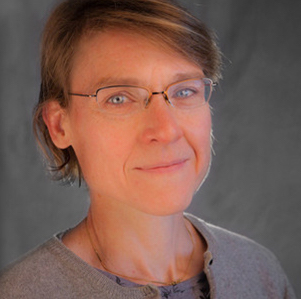
Bjornerud, Marcia
Marcia Bjornerud, Professor of Geosciences at Lawrence University in Wisconsin, is a structural geologist whose research focuses on the physics of earthquakes and mountain building. She combines field-based studies of bedrock geology with quantitative models of rock mechanics. She has done research in high arctic Norway (Svalbard) and Canada (Ellesmere Island), as well as mainland Norway, Italy, New Zealand, and the Lake Superior region. Bjornerud is a Fellow of the Geological Society of America and has been a Fulbright Senior Scholar at the University of Oslo, Norway and University of Otago, New Zealand. A contributing writer to The New Yorker, Wired, the Wall Street… Read moreBjornerud, Marcia
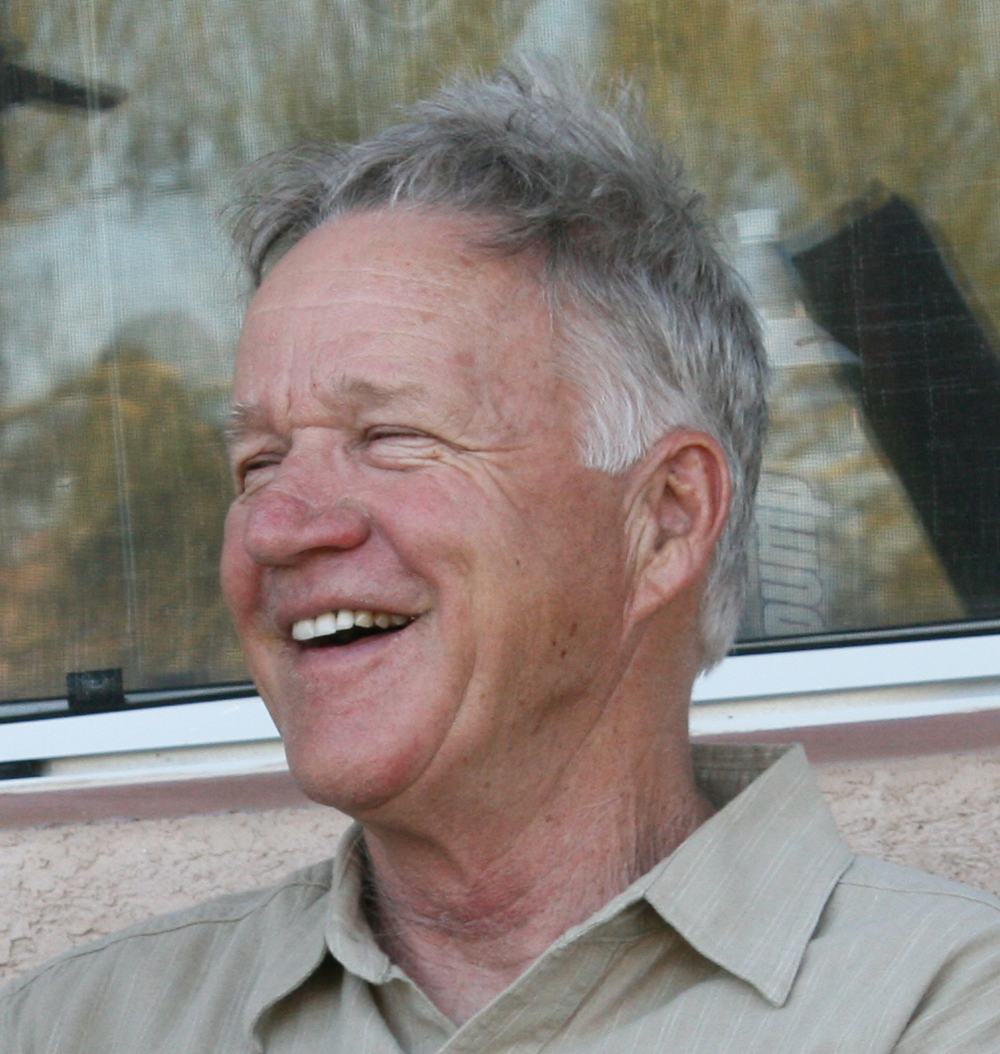
Brown, Ned
Born and raised in Excelsior, Minnesota, Ned attended Dartmouth College (A.B., 1960), the University of Otago, New Zealand (M.Sc., 1961-62 supported by a Fulbright scholarship), and the University of California, Berkeley (Ph.D., 1963-66) with his field area in New Zealand He was employed as a Geology Professor at Western Washington University from1966-1999 and subsequently was appointed as an Emeritus Professor. Over these years he supervised ~30 M.S. student theses, nearly all in the local region. His geology research interests include metamorphism, structure, plutonism, plate tectonics, while working extensively in the San Juan Islands, North Cascades, and Coast Mountains of southern B.C…. Read moreBrown, Ned
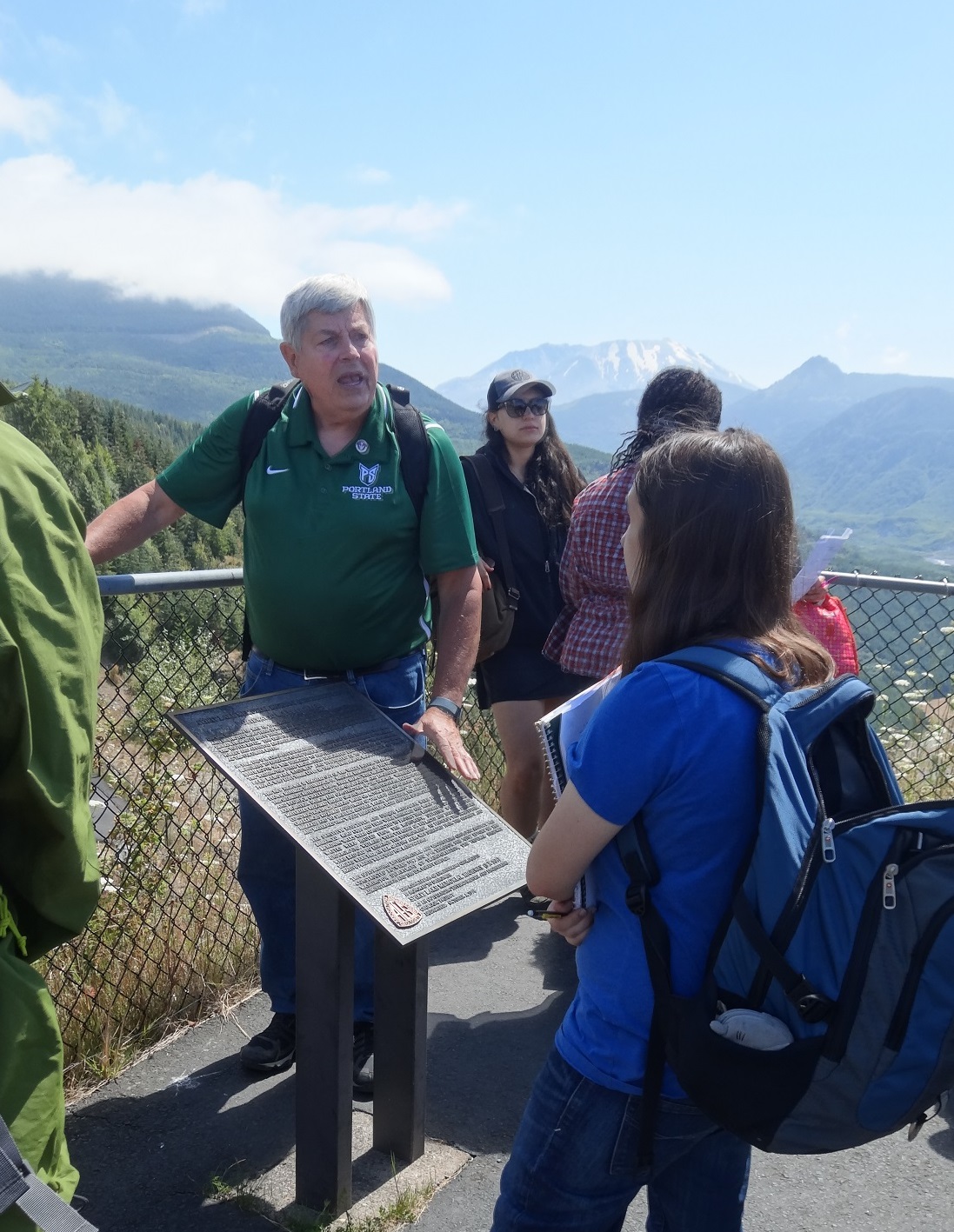
Burns, Scott
Scott Burns is a Professor Emeritus of Geology and Past-Chair of the Dept. of Geology at Portland State University where he just completed his 28th year of teaching. He was also Associate Dean of the College of Liberal Arts and Sciences at P.S.U. from 1997-1999. Scott has been teaching for 48 years, with past positions in Switzerland, New Zealand, Washington, Colorado and Louisiana. Dr. Burns specializes in environmental and engineering geology, geomorphology, soils, and Quaternary geology. Scott has won many awards for outstanding teaching, the most significant being the Faculty Senate Chair Award at Louisiana Tech University in 1987, the Distinguished… Read moreBurns, Scott
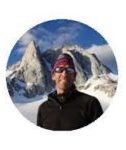
Clark, Doug
Doug Clark is an Associate Professor at WWU, Bellingham. He works on the eomorphic and paleoclimatic significance of alpine glaciation, with a particular focus on the latest Pleistocene and Holocene, Doug has BSc and MSc degrees from Stanford and a PhD in 1995 from the University of Washington. (Updated Oct. 2021)
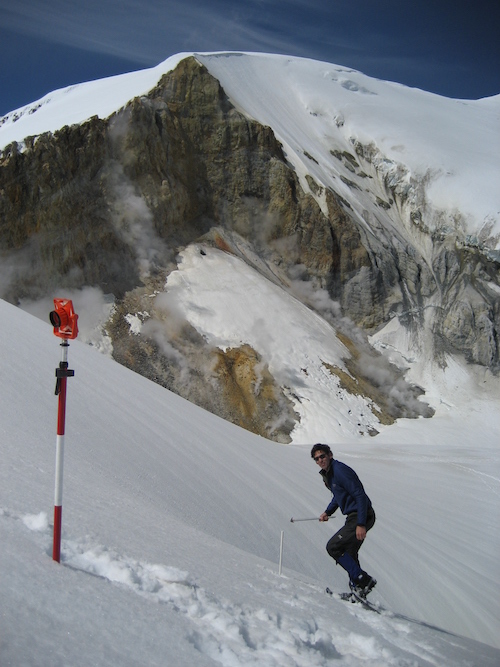
Clark, Douglas
Doug Clark is an Associate Professor of Geology at Western Washington University who has been teaching and conducting research at WWU for more than 20 years. His love of geology in general, and of mountain landscapes in particular, stem from spending much of his childhood hiking and backpacking with his geologist father in the Sierra Nevada. Following these early formative experiences, Doug received BS and MS degrees in Geology at Stanford University and a Ph.D. in Geological Sciences from University of Washington. He also worked as a professional geologist for several years with Earth Sciences Associates in the Bay Area… Read moreClark, Douglas
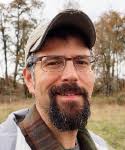
Contreras, Trevor
Trevor is a Licensed Engineering Geologist with the Landslide Hazards Program at the Washington Geological Survey, where he studies landslides and helps communities under-stand and mitigate landslide hazards. He has worked for the WGS since 2006 in various positions and in the Forest Practices Division helping foresters understand landslides and evaluate timber harvest proposals. Prior to working for the Survey, he worked for the Washington Department of Ecology, regulating well drilling and water well construction. Click here to see his bio: https://www.dnr.wa.gov/publications/ger_bio_contreras_trevor.pdf In April 2021, Trevor presented a somewhat different lecture, this one focusing on “Geology and the Art of Stone… Read moreContreras, Trevor
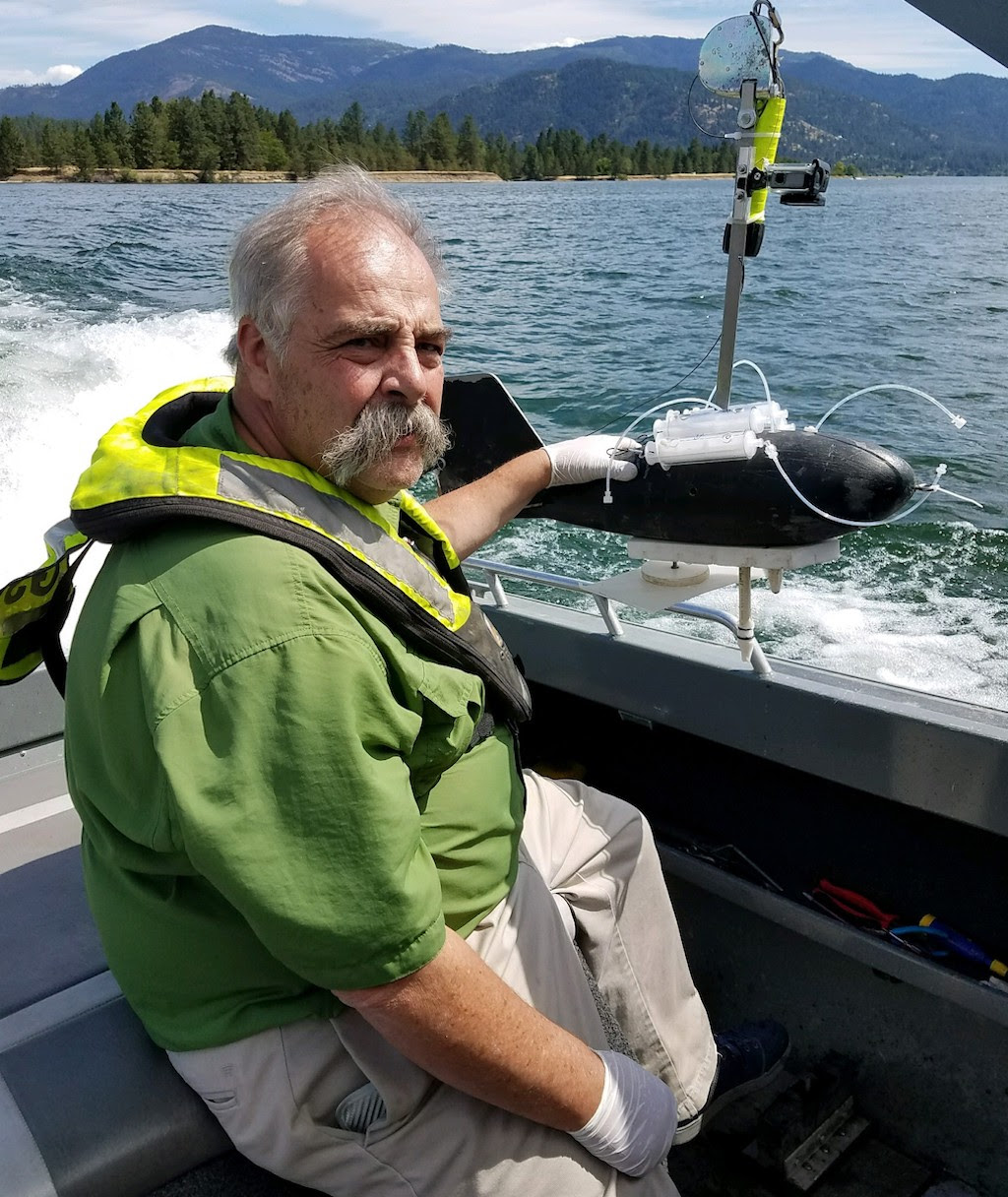
Cox, Steve
Steve Cox graduated from University of Puget Sound in 1978 with a degree in Environmental Science, then went to work at Brown & Haley for two years. He was then hired as a temporary employee by the USGS to help on the 1980 eruption of Mount St. Helens, and contoured on at the Cascades Volcano Observatory for two years. During this time, he attended the UW as a Post-Bachelors non-matriculating student in Geology; he strengthened his geology expertise by taking all their Geology classes except Paleontology. In 1983, he joined the groundwater water quality section of the USGS’s Washington water science center… Read moreCox, Steve
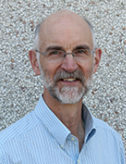
Dawes, Ralph
Ralph Dawes is originally from Edmonds, WA. He has a degree in literature from Antioch College in Yellow Springs, OH, and degrees in geology from WWU (BS) and the UW (MS, Ph.D.). He has taught at Wenatchee Valley College WVC) for 22 years. He is passionate about sharing how the geologic history of the Pacific Northwest gives insight into the landslides, floods, volcanic eruptions, and earthquakes. From his bio at WVC: Ralph Dawes started teaching at Wenatchee Valley College in the winter of 1999. His interests include geology, chemistry and physics, and in how the physical sciences can be… Read moreDawes, Ralph
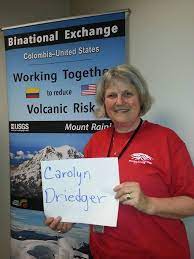
Driedger, Carolyn
My career began with research on glaciers, principally those gracing our Cascade Range volcanoes, and later on glacier-related floods and debris flows. Witnessing the May 18, 1980 eruption of Mount St. Helens and taking part in the response set the course for several fascinating scientific projects. It also provided a front-row seat for observation and reflection regarding the role of science in society. As CVO’s Outreach Coordinator, I work in partnership with public officials, emergency planners, media, park interpreters, and educators to advance the cause of volcano preparedness. Some earlier career choices have informed current work, including several years of teaching in a… Read moreDriedger, Carolyn

Driedger, Carolyn
Hi, I’m Carolyn Driedger, a Hydrologist and Outreach Coordinator at the U.S. Geological Survey in Vancouver Washington. My science career began with research on glaciers and glacier-related hazards principally at Cascade Range volcanoes, and at Columbia Glacier Alaska. I witnessed the May 18, 1980 catastrophic eruption of Mount St. Helens and participated in the initial news media response. This event set the course for several fascinating projects that crossed science disciplines, and it provided me with a front-row seat for observation and reflection upon the role of scientists in society. I’ve learned that scientists must use the same degree of… Read moreDriedger, Carolyn
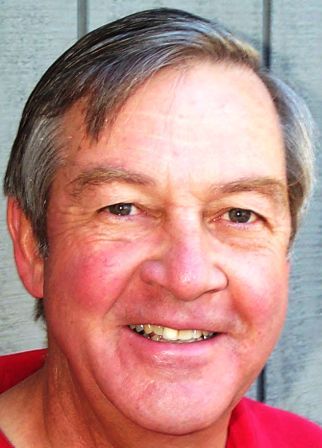
Duffield, Wendell
Now a pink-cheeked septuagenarian, at a much younger age I earned a BA in geology at Carleton College (1963), MS and PhD degrees in geology at Stanford University (1965, 1967), and then landed a job with the U. S. Geological Survey (USGS) to study volcanoes and geothermal energy at home and abroad. My USGS years included a three-year stint as a staff volcanologist at the Hawaiian Volcano Observatory; a north Atlantic sea-floor drilling cruise on the Glomar Challenger (Leg 49); a year working with volcano/geothermal colleagues at the French Geological Survey (BRGM, Orleans); a geothermal summer with the Icelandic Energy… Read moreDuffield, Wendell
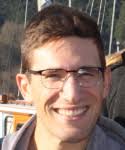
Gallin, Will
Will Gallin is the carbon sequestration project lead at the Washington Geological Survey’s (WGS) Dept of Natural Resources (DRN). He has worked for the Dept. of Ecology in Lacey, the Sevilleta National Wildlife Refuge in Socorro, New Mexico, and the Hess Corporation—an oil and gas exploration and production company in Texas. He graduated in 2005 from Carleton College in Minnesota, and got his MSc in 2010 from the University of Utah in Salt Lake City. His other DRN job is as a mapper for the landslide hazards program. His favorite geological disciplines are sedimentology, stratigraphy, paleontology, and salt tectonics. Will presented on “Geologic carbon… Read moreGallin, Will
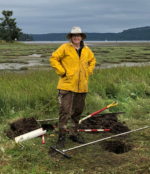
Garrison-Laney, Carrie
Carrie Garrison-Laney is a tsunami hazards specialist at Washington Sea Grant, and a liaison to the NationalCenter for Tsunami Research at the Pacific Marine Environmental Laboratory. Carrie’s work includes refining the ages and sources of tsunami deposits in Washington, and numerical tsunami modeling. Carrie also participates in a variety of outreach activities, including Washington’s Tsunami Roadshow. Carrie earned a bachelor’s degree in Geosciences from San Francisco State University; a master’s degree in Environmental Systems from Humboldt State University; a master’s degree in Human Centered Design and Engineering, and a Ph.D. in Earth and Space Sciences, both from the University of Washington. Carrie spoke about… Read moreGarrison-Laney, Carrie
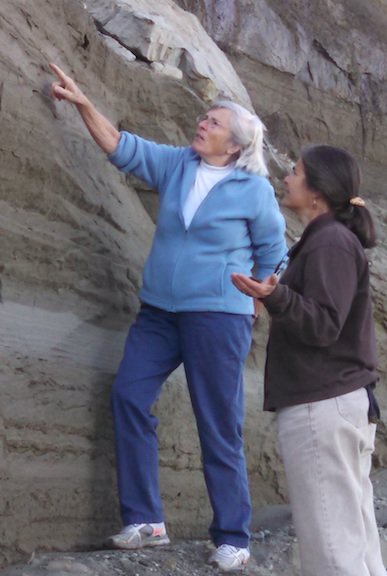
Gerstel, Wendy
Wendy (on the right in photo) is a licensed Engineering Geologist and Hydrogeologist and owner and principal scientist of Qwg Applied Geology, a small woman-owned business she established in 2005. She has over 30 years of experience working with Federal, State, and local jurisdictions, Tribes, non-profit groups, and private landowners throughout the U.S. and extensively in the Pacific Northwest. Since 1992 Wendy has provided coastal geologic, geomorphic, and hydrogeologic input to a range of research, mapping, mitigation, and restoration projects. She obtained a B.Sc. in Geology from the University of New Hampshire in 1980 and her MSc. in Geology from Humboldt… Read moreGerstel, Wendy
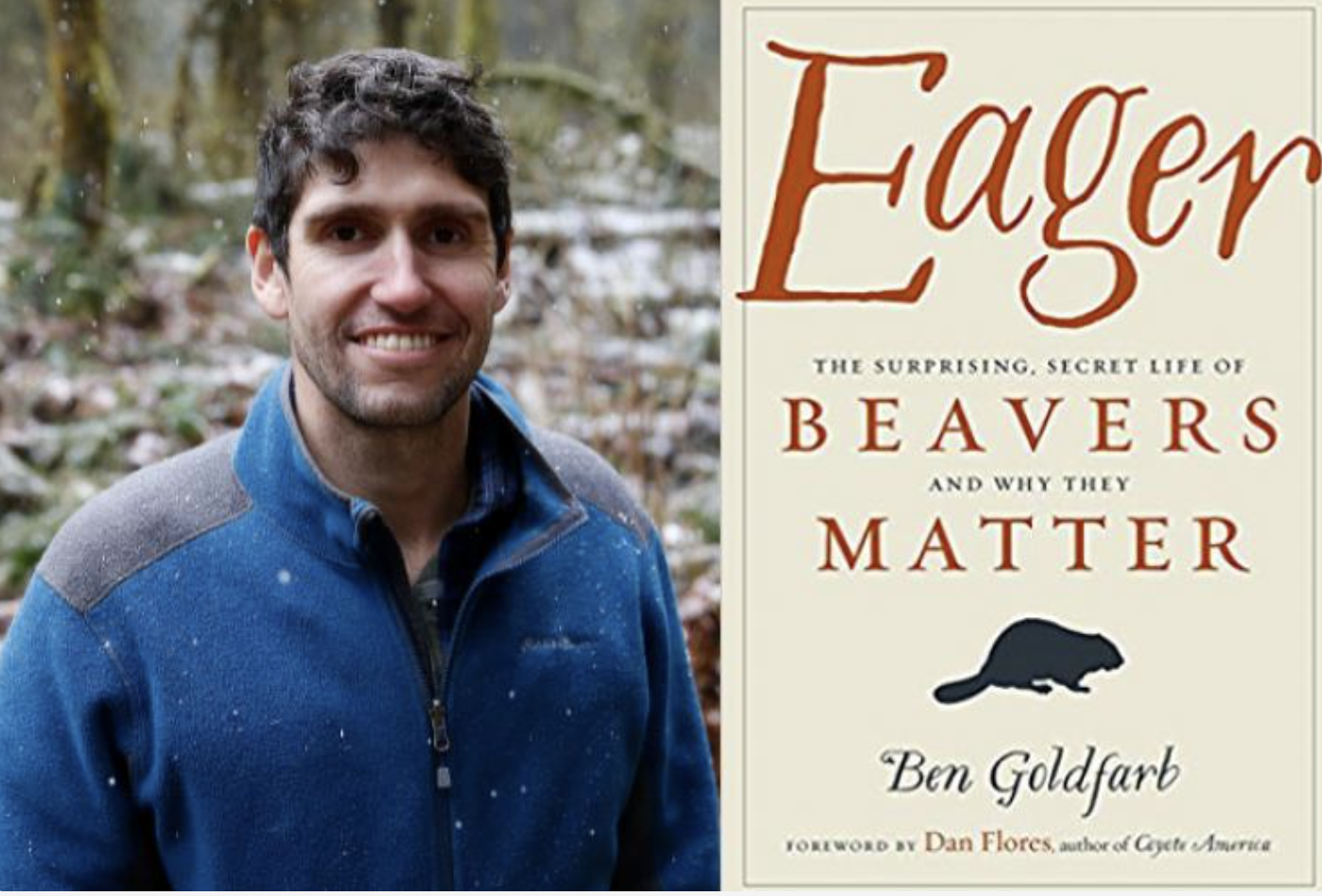
Goldfarb, Ben
Ben Goldfarb is the author of Eager: The Surprising, Secret Life of Beavers and Why They Matter, winner of the PEN/E.O. Wilson Literary Science Writing Award and named a best book of 2018 by the Washington Post. His environmental journalism has also appeared in the Atlantic, Science, The New York Times, Outside Magazine, High Country News, and many other publications. His next book, on the science of road ecology, will be published in 2022 by W.W. Norton & Company. Ben lives in Spokane, Washington, with his wife, Elise, and his dog, Kit — which is, of course, what you call a baby beaver. Ben… Read moreGoldfarb, Ben

Greene, Gary
Dr. H. Gary Greene is a marine geologist who has studied the geology of the west coast US margin from Alaska to Baja, California for the past 35 years. He received a Bachelor of Science degree (Geology/Paleontology) from Long Beach State University in 1966, a Master of Science Degree (Geology/Geophysics) from San Jose State University/Moss Landing Marine Laboratories in 1969, and a Ph.D. Degree (Geology/Marine Geology) from Stanford University in 1977. His doctoral thesis was on the geology of the Monterey Bay region and since then he has explored the offshore areas of California, Oregon, Alaska, San Juan Islands of… Read moreGreene, Gary
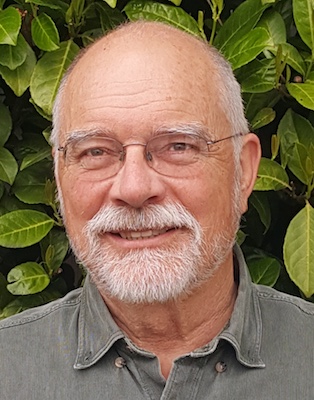
Haugerud, Ralph
Ralph is a research geologist for the U.S. Geological Survey and an Affiliate Assistant Professor in the Dept. Earth & Space Sciences, University of Washington. He grew up in Seattle and product of local education, first getting his B.Sc. & M.Sc. in Geology at Western Washington University (Bellingham) and then his Ph.D. in Geological Sciences in 1985 from the University of Washington in Seattle. He was a post-Doc with the USGS in Reston, VA from 1985-87, then was hired by Branch of Western Regional Geology and moved to Menlo Park in 1988. He escaped CA in 1990 by being transferred… Read moreHaugerud, Ralph
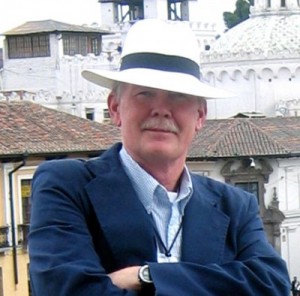
Heiken, Grant
After completing his Ph.D. at the University of California in Santa Barbara in 1972, Grant Heiken (heiken@whidbey.com) worked for NASA’s Apollo Program as a geology instructor and as a researcher on lunar surface processes. In 1975, he and his wife moved to the Los Alamos Scientific Laboratory in New Mexico, where he worked on geothermal exploration and development, volcanic hazard analysis, the uses of volcanic rocks, basic research on explosive volcanism, continental scientific drilling, and integrated urban science. He has co-written or edited 11 books. He retired in 2003 and moved to Freeland on Whidbey Island, Washington, with his wife Jody,… Read moreHeiken, Grant
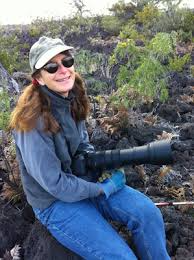
Heliker, Christine
Christina is a geologist who spent most of her career working for the U.S. Geological Survey on active volcanoes. Her first job with the USGS, however, was working on glaciers from an office in Tacoma. When Mt. St. Helens erupted in May 1980, she quickly transferred to Vancouver, to what was soon to become the Cascades Volcano Observatory. She worked there for the next four years while completing a Master’s degree at Western Washington University in Bellingham. In 1984, she moved to the USGS’s Hawaiian Volcano Observatory on the Island of Hawai`i, where she monitored the 35-year-long eruption of Kilauea… Read moreHeliker, Christine
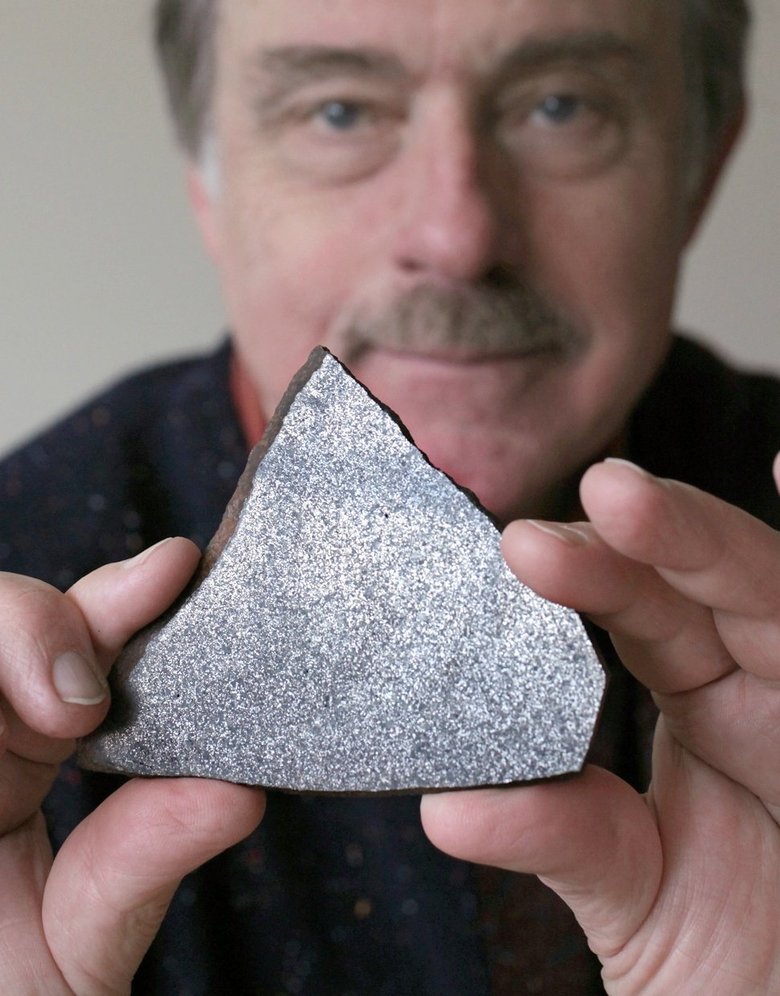
Irving, Tony
Tony Irving, UW professor and world expert on meteorites, holds one of his meteorite samples that has been dated at 4.6 billion years. He is an international expert in meteorites, having identified more than 1500 samples from Northwest Africa, Oman, China and the USA and published over 90 articles in international journals and books. He received his B.Sc. and Ph.D degrees in Australia. In April 2017, Tony lectured to the QGS on Meteorites—Ancient rocks from Space. (Updated Oct. 2021)

Juniper, Kim
Kim Juniper is Chief Scientist with Ocean Networks Canada (ONC), a University of Victoria-basedorganization that operates cabled ocean observatories in the Pacific, Arctic and Atlantic Oceans. He is also Professor in UVic’s School of Earth and Ocean Sciences and Department of Biology, and holder of the British Columbia Leadership Chair in Ocean Ecosystems and Global Change. He has authored more than 130 peer-reviewed publications on the microbiology, biogeochemistry and ecology of deep-sea hydrothermal vents, and low oxygen and other marine habitats. He has contributed scientific leadership and advisory roles to many national and international initiatives including, most recently, the Canadian… Read moreJuniper, Kim
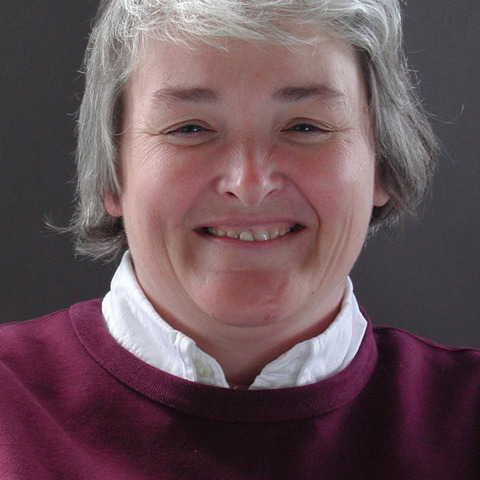
Kelley, Debbie
Dr. Deborah Kelley, a marine geologist and professor in the School of Oceanography at the University of Washington. She has dove in the submersible Alvin >50 times, reaching depths of 4,000 m and in some of the most extreme environments on Earth – underwater hot springs that emit fluids at >360°C. She has participated on >35 research cruises using the submersible Alvin and an array of tethered robotic and autonomous underwater vehicles. Kelley is passionate about taking students to sea and providing hands-on experience in all aspects of seagoing research. In Jan 2019, Dr. Kelley lectured on “Earthquakes, Volcanoes, and Exotic Deep Sea Life… Read moreKelley, Debbie
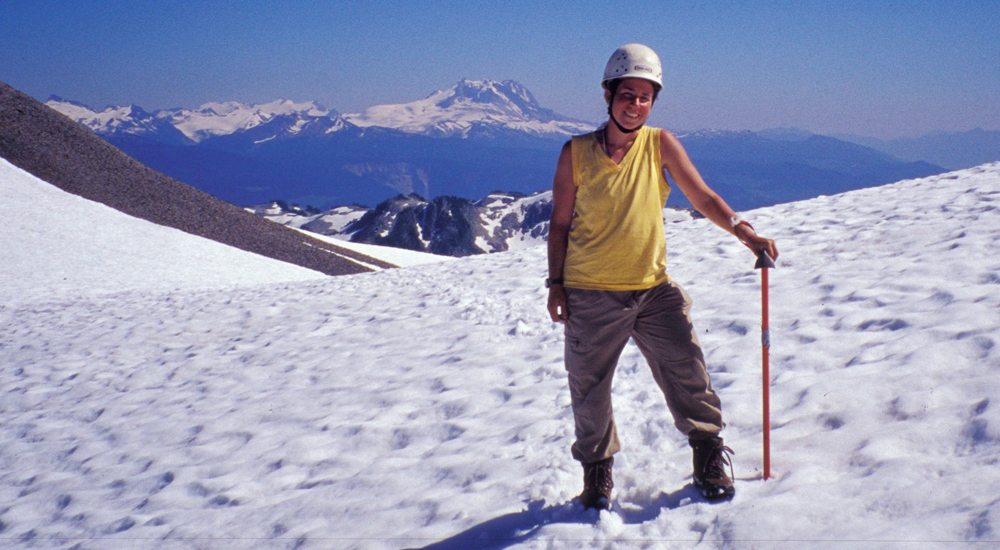
Kelman, Melanie
Melanie Kelman is a volcanologist with Natural Resources Canada (NRCan) in Vancouver. She first became interested in geology as a child, when her father, a hobby rock collector, took the family to quarries, gravelly lake shores, and mine dumps around western Canada and the United States. She completed a B.Sc. at the University of Saskatchewan in 1994, an M.Sc. at Oregon State University in 1998 (studying altered seafloor rocks from the Tonga trench in the southwest Pacific), and a Ph.D. at the University of British Columbia in 2005 (studying volcano – ice interaction at southwest BC’s Mount Cayley volcanic field)…. Read moreKelman, Melanie
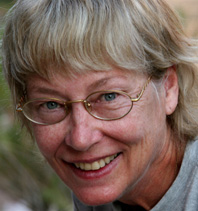
Kieffer, Sue
Susan Kieffer is a geologist and planetary scientist in international renown. She is known for her research on fluid dynamics of volcanoes, geysers and rivers and for her model of the thermodynamic properties of complex minerals. She has also contributed to the scientific understanding of meteorite impacts. Susan Kieffer received her B.S. in physics/ mathematics from Allegheny College in 1964 and is an alumna of Cal Tech, receiving both an M.S. (1967) in geological sciences and Ph.D. (1971) in planetary sciences. She worked with the U.S. Geological Survey in Flagstaff, Arizona (1979–1990) and was affiliated with both Arizona State University (1989–1993) and Cal Tech (1982)…. Read moreKieffer, Sue
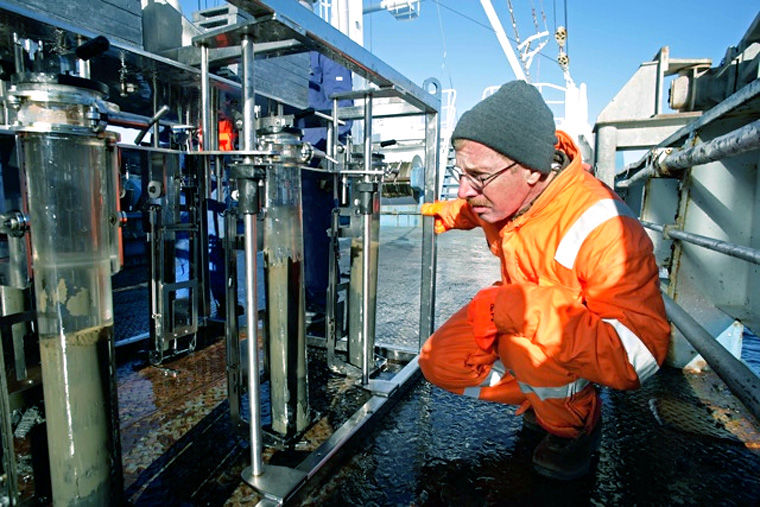
Loubere, Paul
Paul is a retired Distinguished Research Professor who has been instrumental in forming and managing our Geology Group. We last had Paul on our stage in 2015 as a speaker on Rising Seas, Retreating Shorelines. Our local newspaper, the PT Leader, wrote about his presentation – read more… Googling Paul’s background yields these biographical notes: Paul Loubere decided to be an oceanographer at age 9. He received a B.Sc. Honors in Geology and Biology from the University of Keele, England and a Ph.D. in Marine Geology and Micropaleontology from the School of Oceanography, Oregon State University. His interests include global climate and ocean-climate… Read moreLoubere, Paul
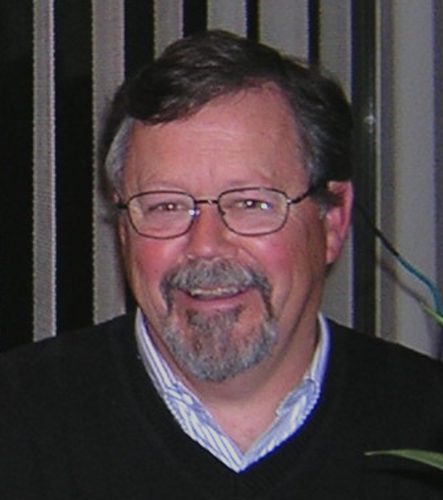
Machette, Michael
Michael Machette is a practicing earthquake geologist and the owner of Paleo Seis Surveys LLC, a geologic consulting firm that deals with geologic hazards at critical facilities such as nuclear power plants, dams, and pipelines. His projects have included a Trans-Turkey gas pipeline, hazard analyses of nuclear power plants in Arizona, Brazil, Idaho, and Utah. He earned a B.Sc. in Geology from San Jose State University in 1972 and his M.Sc. in Quaternary Geology from the University of Colorado in 1975. For most of his career he was a geologic mapper and research geologist with the U.S. Geological Survey (1972-2008)… Read moreMachette, Michael

McShane, Dan
Dan McShane has a B.Sc. and M.Sc. in Geology from WWU in Bellingham. He has worked as a geologist and engineering geologist in Washington State since 1989. He is currently employed by the Stratum Group as an Engineering Geologist in Bellingham, WA. Dan writes a geology blog (http://washingtonlandscape.blogspot.com) that provided some early information about the Oso Landslide to the general public as well as geologists not familiar with the specific area. Dan spoke to the QGS about the Oso Landslide and the potential for similar events on the Quimper Peninsula on Oct. 4, 2014. (Updated Oct. 2021)

Miller, Ian
From 2011 to the present, Ian Miller, Washington Sea Grant’s coastal hazards specialist, has played an active role in investigating and assessing the coastal influences of the Elwha watershed restoration. Removal of the two dams eventually led to the transfer of 19 million metric tons of mud, sand and gravel that had been trapped in the reservoirs to the coastal zone. WSG-funded research confirmed that sediment reconfigured the shoreline, restored eroding beaches and led to cascading ecological changes in the estuary and nearshore zone around the river’s mouth. Based at Peninsula College, Dr. Miller focuses on research, education, and outreach… Read moreMiller, Ian
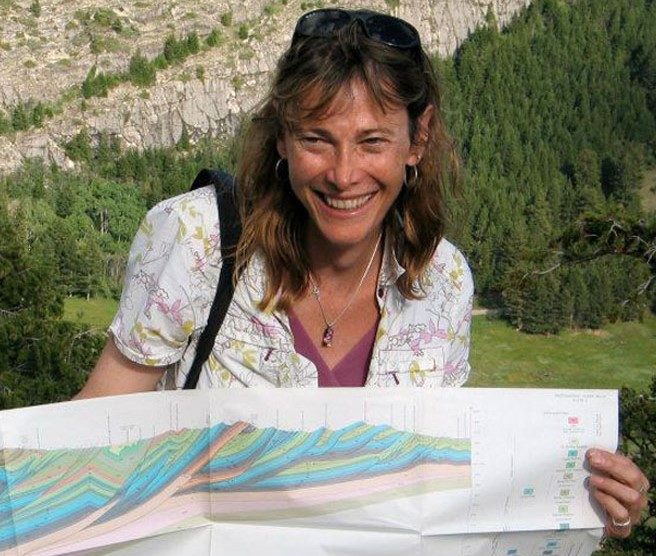
Miller, Marli
Marli Miller received her BSc in geology from Colorado College, then completed her MSc and PhD in structural geology at the University of Washington in the early 80’s. She currently is a tenured Senior Instructor and Researcher in the Dept. of Earth Sciences at the University of Oregon in Eugene, where she maintains the website: geologypics.com. This site offers free downloads of more than 4,500 of her searchable geology photographs. In addition, she is a prolific writer. She is the author of Roadside Geology of Oregon, 2nd Edition, and the Roadside Geology of Washington, 2nd Edition, which she wrote with… Read moreMiller, Marli

Mustoe, George
George Mustoe was born and raised in Nevada, arriving in Bellingham with his family at the formative age of 15. After some years at WWU getting educated as a geochemist, he eventually made a switch to paleontology as his main research interest. George has published close to 100 peer-reviewed journal articles that span a range of geoscience topics—a publication record that he cites as evidence of wide-ranging scientific interests or maybe just a short attention span. Following his retirement in 2014, George became a Geology Research Associate at WWU where he continues his pursuit of paleontology.
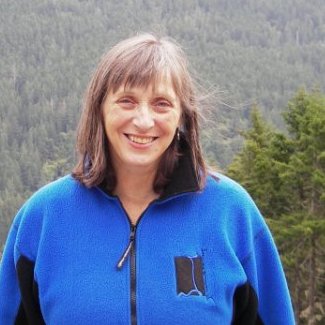
Neal, Kathryn
Kathryn Neal, P.E. is Civil Engineering Manager with the City of Port Angeles. Kathryn has a Bachelor of Architecture and Civil Engineering from the University of Washington and has been a practicing Professional Engineer since 1994. In her time with Port Angeles, this has been one of the largest and most significant projects she has been involved in, and arguably the most unique. The project, which was completed this year at a cost of about $21.3M, protects the environment, will last for many decades, and was successfully accomplished within the financial constraints of a small city. She grew up in… Read moreNeal, Kathryn
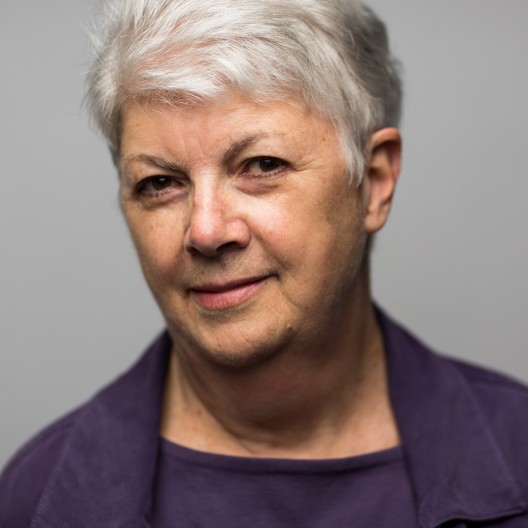
Nesbitt, Liz
Dr. Elizabeth Nesbitt is Curator of Paleontology at the Burke Museum and Earth Sciences professor at the University of Washington. She received her doctorate from the University of California, Berkeley. Much of her research involves the effects of changing climate on marine faunas, from large vertebrates to invertebrates and microscopic forms. She is currently working with Burke colleagues on measuring the health of Puget Sound through examination of the foraminifera in bottom sediments. She is continually involved with the numerous exhibits at the Burke Museum, emphasizing communicating science to all ages. For example, she curated “Cruising the Fossil Freeway”, an… Read moreNesbitt, Liz
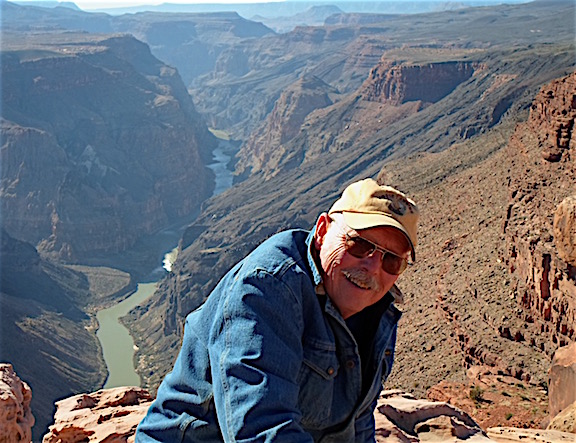
Norlin, Keith
Keith Norlin is a geologist who recently retired (a second time) and moved to Port Townsend. His previous retirement job was as a geology instructor for Dixie State University in St. George, Utah, where he also led geology hikes for the Road Scholar program (www.roadscholar.org). He has served as an advisor to the QGS for a decade now. Keith is a graduate of the University of Wisconsin, where he obtained a BSc. in Geology. He spent his career as a geophysicist for the U.S. Naval Oceanographic Office, as an engineer for Westinghouse Ocean Research Laboratory, and as an exploration geologist… Read moreNorlin, Keith
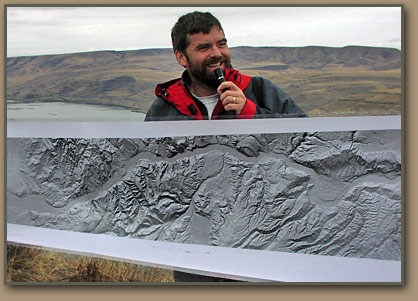
O’Connor, Jim
Jim O’Connor is a Research Geologist at the U.S. Geological Survey in Portland, Oregon, where he has been stationed since 1996. His primary research focus is landscape evolution in the Pacific Northwest. He majored in Geological Science at University of Washington and earned M.S. and Ph.D. degrees at University of Arizona. In Feb. 2017, Jim lectured on the Bridge of the Gods & the Bonneville Landslide. (Updated Oct. 2021)
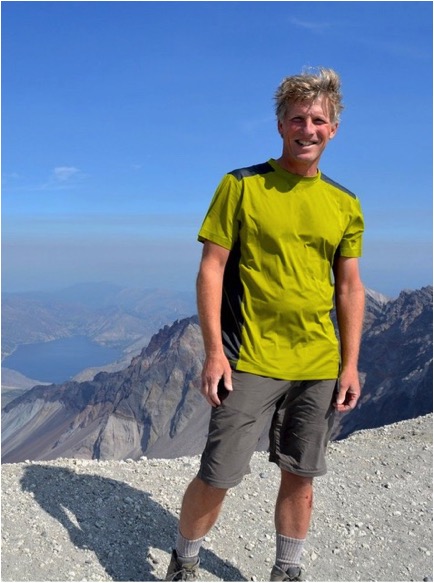
Olsen, Steve
Steve is a freelance writer based in Seattle who has had the good fortune to write about some of the most interesting and important topics of our time, including genetics, race, human origins, evolution, climate change, education, talent, competition, and punk rock music. Here’s a short bio. My most recent book (and the subject of my Geology Group lecture) is Eruption: The Untold Story of Mount St. Helens, which was named one of the 20 best nonfiction books of 2016 by Amazon, was nominated for The Boardman Tasker Prize for Mountain Literature, and was an Indie Next selection. In Jan. 2017 Steve lectured on his new book “Eruption—The untold story… Read moreOlsen, Steve
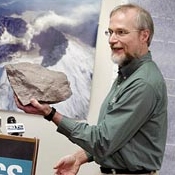
Pallister, John
John Pallister is a recently retired Senior Reseach Geologist at the U.S. Geological Survey in Vancouver, WA. John has a long, varied and distinguished career, most recently as coordinator for the USGS’s VDAP program. VDAP is the Volcanic Disaster Assistance Program, an international project to monitor volcanic eruptions around the world. John spoke to the QGS at the Port Townsend Aero Museum in Sept. 2018 on “Volcanic hazards to aircraft and the VDAP. (Updated Oct. 2021)

Pestrong, Ray
I am an Emeritus Professor of Geology in the Department of Earth & Climate Sciences at San Francisco State University. I teach majors’ courses in geomorphology and engineering geology, and a great variety of general education courses in introductory geology. My prime interest, at the moment, is “Geosciences and the Arts.” I have authored a number of college texts, have produced geologic videos, published the requisite number of articles in professional journals, and done those things expected of a university professor. What I love most, however, is teaching, and the exciting interactions possible through that venture. In Jan. of 2015,… Read morePestrong, Ray
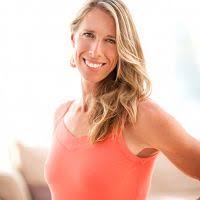
Pierce, Jen
Dr. Jen Pierce is a Professor at Boise State in the Department of Geosciences, where she has been since 2005. Her research and professional interests include wildfires and landscape response, soils and carbon storage, climate science education and outreach, and building diverse leadership in Geoscience. Dr. Pierce grew up in Colorado and Wyoming, and received her undergraduate degree from The Colorado College, her master’s degree from the University of Oregon, and her PhD from the University of New Mexico, and currently serves on the Board of Directors for the Friends of the Teton River. Dr. Pierce received the 2018 Boise… Read morePierce, Jen

Polenz, Michael
Michael Polenz joined WGS in 2000 and has mostly produced 1:24,000-scale geologic maps in western Washington. He has also worked on landslide inventories, landslide hazard zonation maps, Columbia Basin basalt flow stratigraphy, fault trench investigations, documentation of earthquake effects, and engineering geologic well logs. Prior to joining WGS, Michael got kicked out of his native Germany for not sufficiently appreciating soccer and beer. He then worked as an engineering geologist and environmental consultant in northern and central California. Michael’s thesis work centered on tectonic geomorphology and sediment weathering at the Crescent City Coastal Plain, California. In Aug. 2014 Michael and… Read morePolenz, Michael
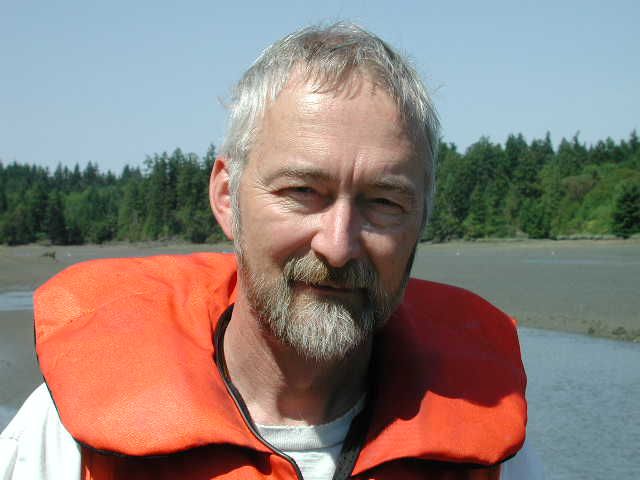
Pringle, Pat
Pat Pringle is a highly regarded geologist who has studied throughout western Washington and is the author of roadside geology guides to Mount Rainier and Mount St. Helens. He is a frequent speaker and field trip leader for the QGS. He retired as a Emeritus from Centralia College in 2017. Here is his bio from there: I am Professor Emeritus of Earth Science at Centralia College, Washington and was Professor of Earth Science from 2005–2017. From 1990–2005 I was Research Geologist, WADNR Div. of Geology and Earth Sciences (now Washington Geological Survey), and from 1982–1990 was with US Geological Survey… Read morePringle, Pat
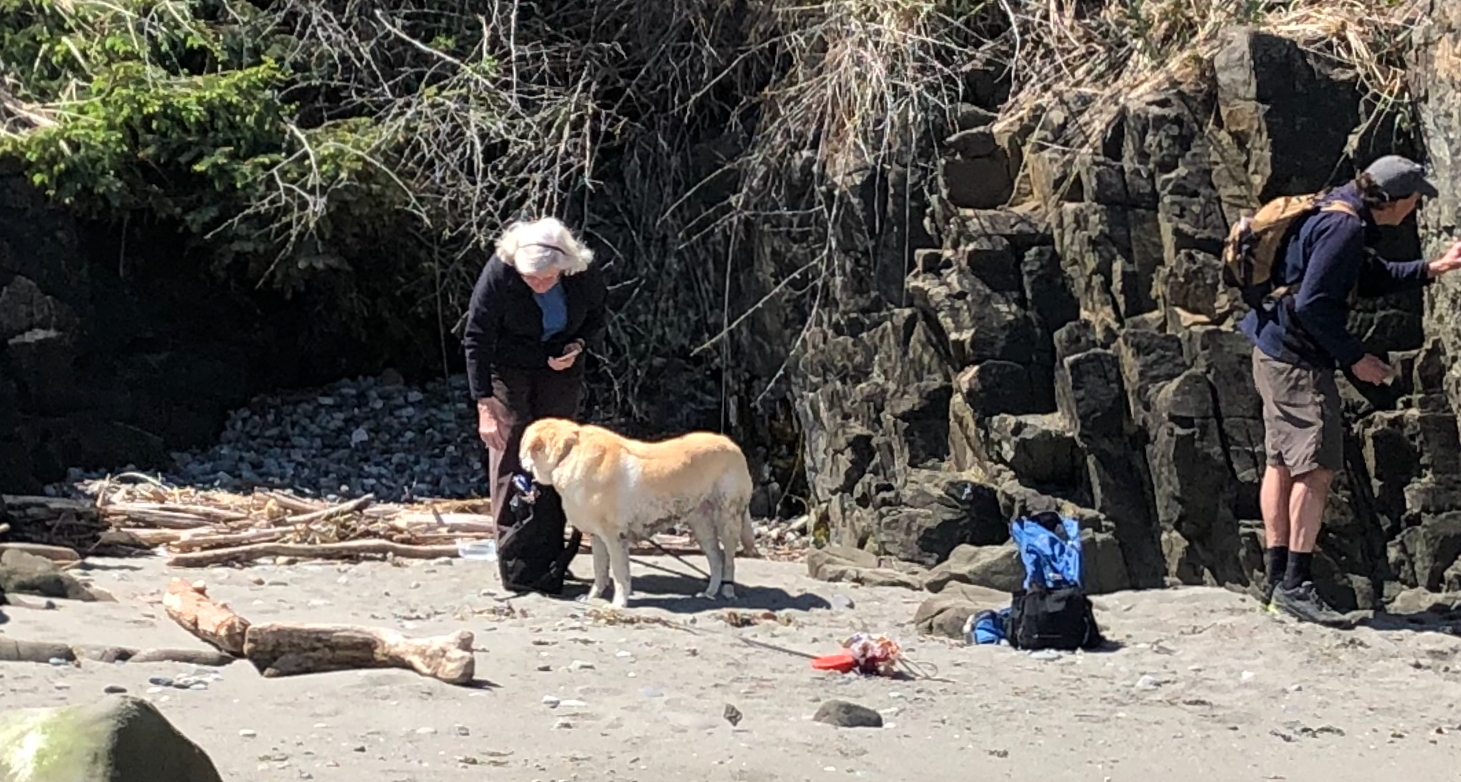
Reed, Kitty
Kitty (Katherine Milmine) grew up in New England but saw the Rocky Mountains in about 1950 at age 12. Going west was then the goal. But her geology degrees from Bryn Mawr and Harvard came with no fieldwork at all. She married a fellow grad student (Bruce Reed) and, in 1962, moved to California, where she soon started a career in tech editing with the USGS. Eventually, the family settled in Anchorage, AK. Summers often found them in remote field camps. She came to Olympia, WA, in 1986 to edit for what is now the Washington Geological Survey (now a… Read moreReed, Kitty
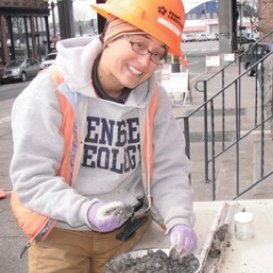
Rinck, Brandy
Brandy is a geoarchaeologist with King County Parks and Recreation in Renton, WA. She obtained degrees in Anthropology and Geology at SUNY Geneseo, followed by an M.A. in Geoarchaeology at Boston University. Ten years ago, Brandy moved to the Pacific Northwest to work in the field of Cultural Resources Management for a private firm in Seattle. She is extremely active in a number of Geology and Archeology groups in Puget Sound. In Jan 2018, Brandy lectured on “Geo-Archeology in Washington—Hidden landforms and buried history.” (Updated Oct. 2021)
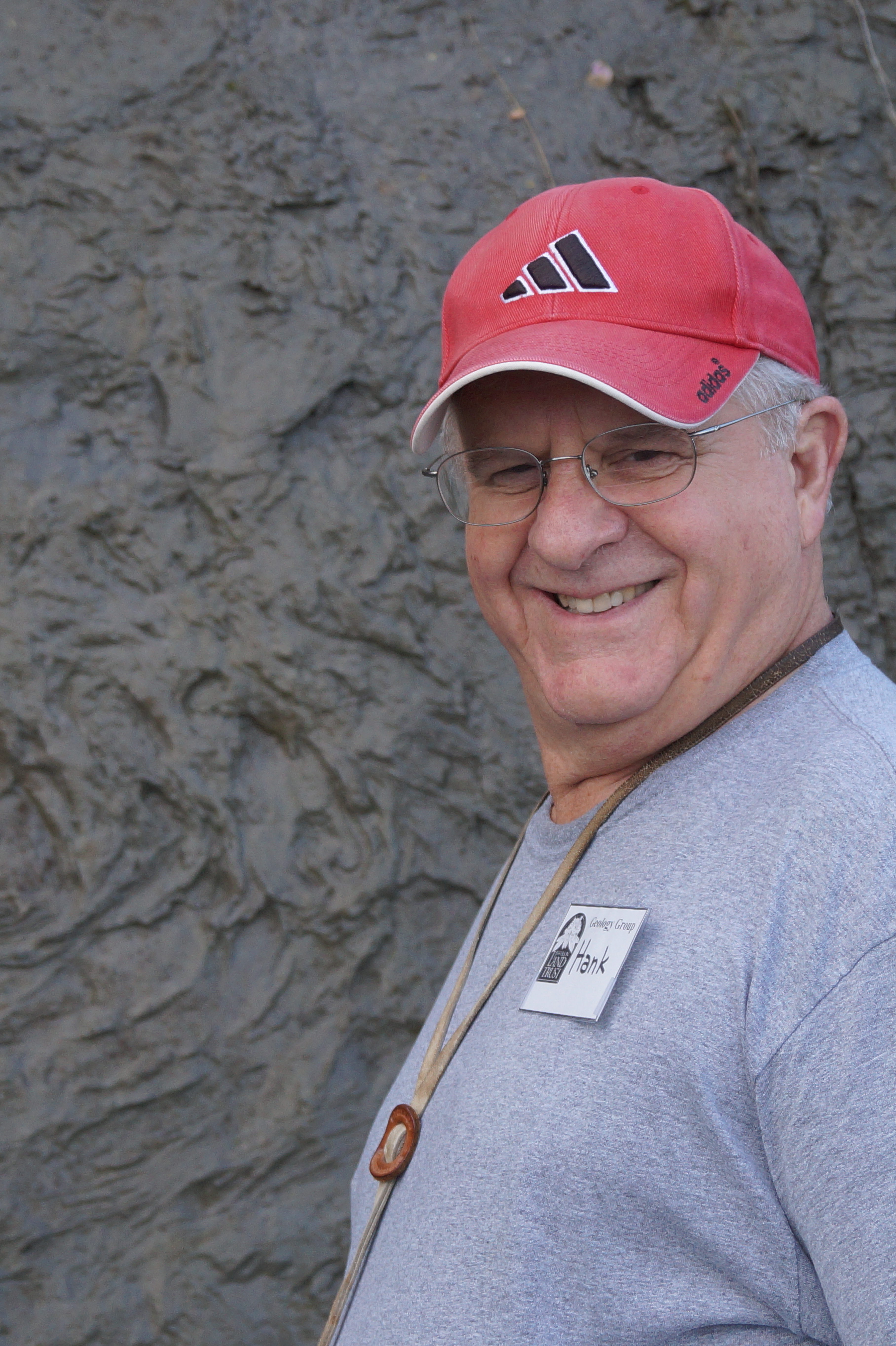
Schasse, Hank
In June 2015, Hank Schasse presented an overview of the geology of the upper Quimper Peninsula, and illustrate many of these relations during his talk. This talk is based on his 2004-05 mapping of the Port Townsend and Port Hadlock areas.The following day, Hank led a field trip to see some of his mapping. He spent much of his career mapping the geology of Washington. Hank is now retired but still loves to share his knowledge of the area of Port Townsend.
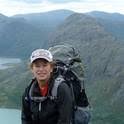
Schermer, Liz
Liz Shermer, Professor, Department of Geology, Western Washington University, Her areas of expertise are the application of structural geology, metamorphic petrology, and geochronology to problems in continental tectonics; tectonic geomorphology and active faulting at continental margins. Liz led a QGS field trip to the San Juan Islands in 2015. (Updated Oct. 2021)
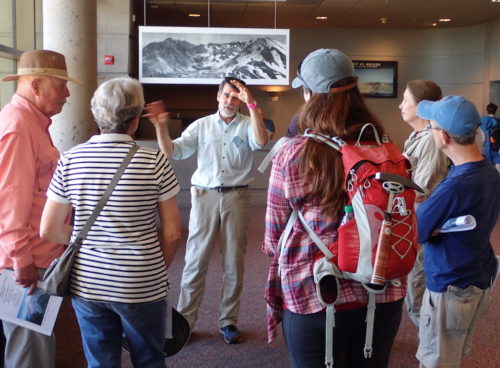
Scott, William (Willie)
I retired from the U.S. Geological Survey in 2015 after a 40-year career, during which I was stationed in Denver, Colo., and at the Cascades Volcano Observatory in Vancouver, Wash. I received my geology degrees at St. Lawrence University (B.S.) and at the University of Washington (M.S. and Ph.D.), where my research focused on understanding the Quaternary glacial history of the central Oregon Cascades. My initial projects at USGS were mapping the surficial geology of the eastern Snake River Plain, Idaho, and pursuing studies of Quaternary stratigraphy and faulting along the Wasatch Front in Utah. The latter resulted in a greatly… Read moreScott, William (Willie)

Serdar Tepper, Carol
Carol Serdar Tepper was born and raised in southern Puget Sound. Her Master’s work included a description and analysis of a large landslide and related salmon impacts. She is a Licensed Geologist with 20+ years experience as a Washington State regulator (current) and formerly WA State Secondary Science Teacher, 10 years which included developing a middle-school science curriculum based on Pacific Salmon life history and habitat. Carol is an long-time advisor to the QGS. She has participated in and assisted with many QGS field trips, especially those lasting multiple days. (Updated Oct. 2021)

Shipman, Hugh
Hugh was a geologist with the Shorelands Program at the Washington Department of Ecology since 1989 but retired in 2019 after 30 years. His interests include coastal erosion, geologic hazards, and the environmental impacts of shoreline modifications. Hugh grew up near the coast of Maine but moved to the Puget Sound region in 1983. (Updated Oct. 2021) Here is his bio from Sound Waters University 2018: Hugh has been a Coastal Geologist with the Shorelands and Environmental Assistance program of the Washington Department of Ecology since 1989. He works all over Puget Sound and is interested in coastal erosion, geologic… Read moreShipman, Hugh
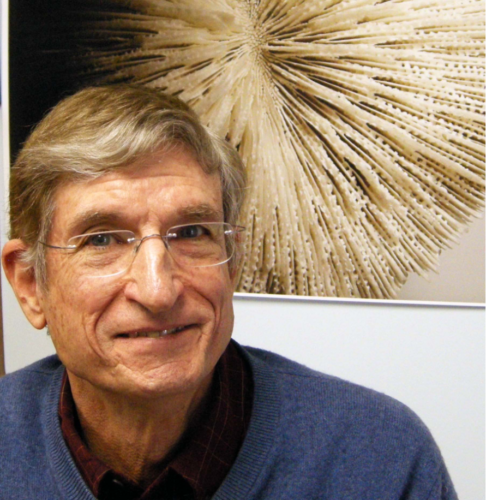
Stanley, George
Professor Stanley is Professor Emeritus and former Director of the University of Montana Paleontology Center. In the Department of Geosciences at Montana, he taught and conducted research in paleontology and geology for 35 years. He is a Fulbright Fellow and former geologist and Research Associate at the Smithsonian Institution, Museum of Natural history. His research has helped clarify mass extinctions, the evolution of reef structures and modern and ancient coral lineages. Stanley is a Fellow of the Geological Society of America, Organization for Tropical Studies and Fellow of the American Association for the Advancement of Science. He’s author of over… Read moreStanley, George
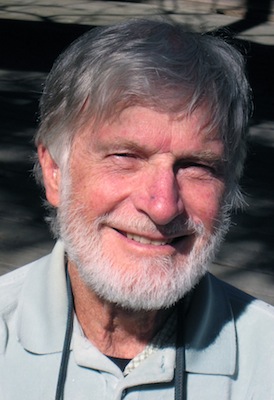
Tabor, Roland
In May 2013, Dr. Tabor, a leading scientist in the Northwest and author of the sentinel publication Geology of Olympic National Park, presented his personal experiences from years of mapping in the Olympic Mountains, a detailed outline of their geology, the development of geologic ideas about their formation, and briefly mentioned some new work by others. (Updated Oct. 2021)
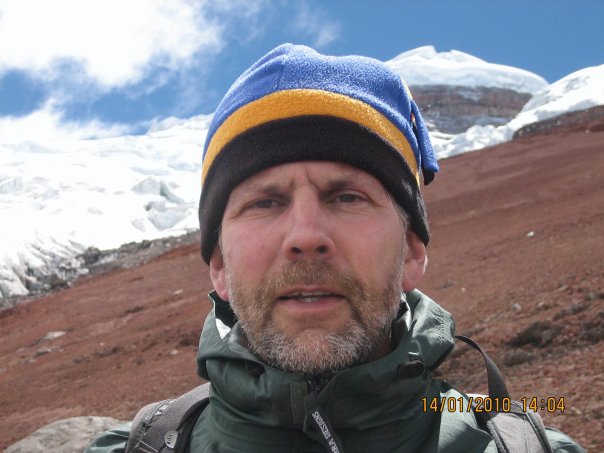
Tepper, Jeffrey
Jeff Tepper is an Emeritus Professor in the Geology Department at the University of Puget Sound. He received his AB from Dartmouth College and his MS and Ph.D. from the University of Washington, where he studied the origins of granites in the North Cascades. After teaching on the east coast for ten years, he joined the faculty at Puget Sound in 2001. Jeff’s research uses geochemistry to investigate geologic questions. He and his students are currently studying the Eocene magmatic and tectonic history of the Pacific Northwest, the environmental history of the Puget Sound area as recorded in lake sediments,… Read moreTepper, Jeffrey
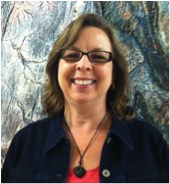
Troost, Kathy
Kathy Troost is a Licensed Geologist with 34 years of experience in geological research and investigations focused on the Pacific Northwest. Kathy has published many geological maps and papers about Quaternary geology and deposits. She teaches at the University of Washington in Seattle, has her own consulting company, is currently the President of the Northwest Geological Society, and planned to complete her doctorate at UW later this year (2013?). in Oct. 2013 Kathy lectured on the “Jökulhlaups from Glacial Lake Puyallup, Pierce County, WA.” (Updated Oct. 2021)
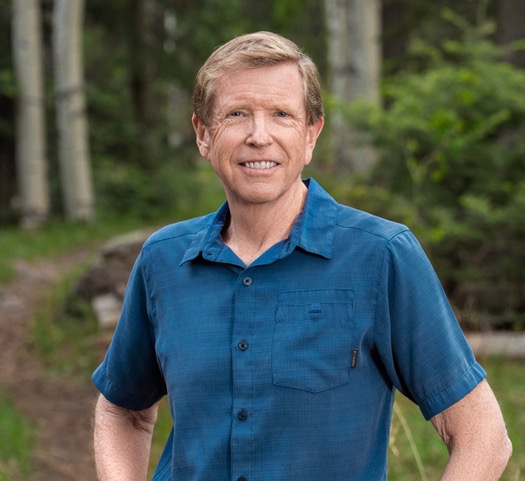
Wallace, Terry
Terry C. Wallace Jr. was raised in Los Alamos, New Mexico, and graduated from Los Alamos High School in 1974. He earned a Bachelor of Science degree in geophysics and mathematics from New Mexico Institute of Mining and Technology, followed by a Master of Science and PhD in geophysics from the California Institute of Technology. From 1983 to 2003, he was a professor at the University of Arizona. In 2006 Terry heard the call home and moved back to Los Alamos to become LANL’s Principal Associate Director for Science, Technology, and Engineering, then Principal Associate Director for Global Security. He served as the 11th Director of Los Alamos… Read moreWallace, Terry
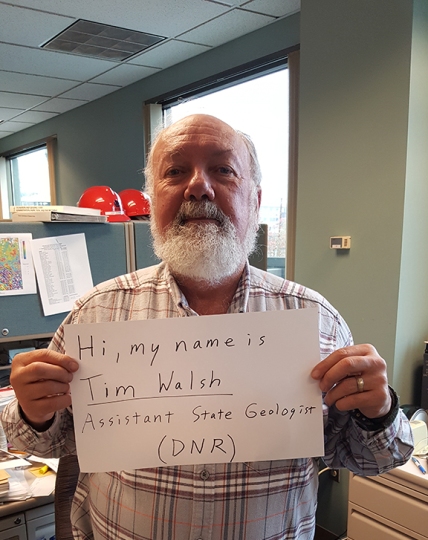
Walsh, Tim
An era is ending at the Washington State Department of Natural Resources. After a very productive 38-year career Tim Walsh is retiring in 2018 from the Washington Geological Survey. It seems like a long time to us, but to geologists, 38 years is a standard rounding error. Tim Walsh began his career at DNR in 1980 as a project geologist for the Survey mapping and assessing coal resources in Washington. Shortly after his hire, Tim flew a reconnaissance flight to observe smoke coming from Mount St. Helens. The small plane carrying the California native could barely top the mountain’s then… Read moreWalsh, Tim
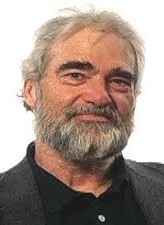
Ward, Peter
Dr. Peter Ward is a paleontologist and astrobiologist at the University of Washington and a world-renowned authority on mass extinctions, climate change, evolution, and astrobiology. His research examines the history of life on Earth over billions of years, focusing in particular on mass extinction events. That work gives him unique ‘deep time’ perspectives on the future of life on this planet, as well as the possibility of life elsewhere in the universe. Dr. Ward has appeared on NOVA and Ted Talks and written over a dozen popular science books including “Rivers in Time: the Search for Clues to Earth’s Mass… Read moreWard, Peter
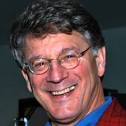
Wells, Ray
Ray Wells has been a research geologist at the U.S. Geological Survey for almost 30 years, concentrating on the use of field geology, magnetic rock properties (paleomagnetism), and GPS to solve large-scale problems in the Earth’s on-going structural evolution. Ray has produced a simple, hands-on block model of the Pacific Northwest, which he will demonstrate at the talk. Today, 165 of the models are used in classrooms around the Pacific Northwest. Ray received his B.S. in Geological Science from Penn State, his M.S. from University of Oregon, and his Ph.D. from the University of California, Santa Cruz. Since 1975, he… Read moreWells, Ray
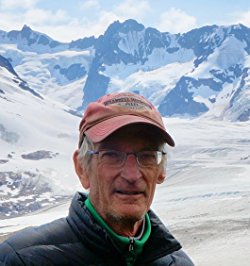
Wesson, Rob
As a kid growing up in the Pacific Northwest, Rob Wesson became fascinated by mountains and glaciers. This interest led to a BS in earth science from MIT, and an M.Sc. and Ph.D. in geophysics from Stanford University. His career in earthquake research with the U.S. Geological Survey (USGS) spans four decades, where he is currently a Scientist Emeritus. In retirement, his research has turned to Chile where he is collaborating with a team exploring large earthquakes, tsunamis, and associated tectonic questions. This work has been supported in part by grants from the National Science Foundation. When not traveling to… Read moreWesson, Rob
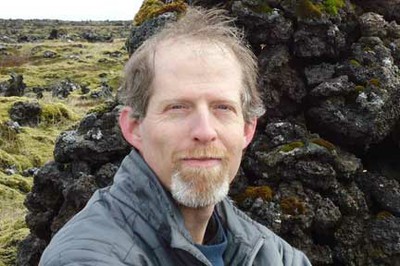
Williams, David B.
David B. Williams is a freelance writer in Seattle. Originally raised in Seattle, he went to college in Colorado where he initially studied physics but switched to geology (a smart move). He received a Bachelor of Arts in geology from Colorado College in 1987 was then hired by the Canyonlands Field Institute in Moab, Utah. This led to a job as an Interpretive Park Ranger at Arches National Park and then in Boston while his wife attended graduate school in 1997. He must have heard Horace Greely’s admonition of Go West Young Couple, and they returned to Seattle where he… Read moreWilliams, David B.
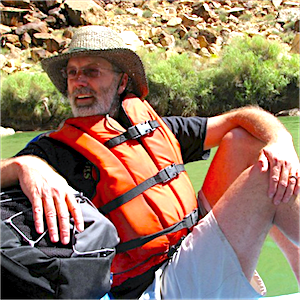
Williams, Tom
Thomas R. Williams, M.S., P.G. has more than 35 years of working and teaching experience and is a retired Engineering Geologist. He has taught earth sciences at eight Bay Area colleges including Sonoma State University, U.C. Berkeley Extension, Dominican University, Santa Rosa Junior College, Diablo Valley College, College of Marin, Napa Valley College, and Mendocino College. Tom has led 34 GeoAdventures (http://geology-adventures.com) since 1997. For the past five years, Tom has co-lead geology field trips exploring the landscapes and geology of Scotland. These trips follow in the footsteps of Hutton and other pioneering Scottish geologists and visit localities such as Salisbury… Read moreWilliams, Tom
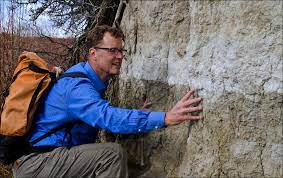
Zentner, Nick
Nick has been with Central Washington University (Ellensburg) Geology since 1992. He teaches a popular “GEOL 101 – Geology of Washington” course to CWU students every Fall Quarter and Winter Quarter – and his course is open to townspeople for free! He also teaches “GEOL 351 – Pacific Northwest Geology” in spring. For all of Nick’s outreach efforts, please visit his website: nickzentner.com. In 2015, Nick received the prestigious James Shea Award, a national award recognizing exceptional delivery of Earth Science content to the general public. Past Shea Award recipients include John McPhee, Jack Horner, Robert Ballard, and Stephen Jay… Read moreZentner, Nick
